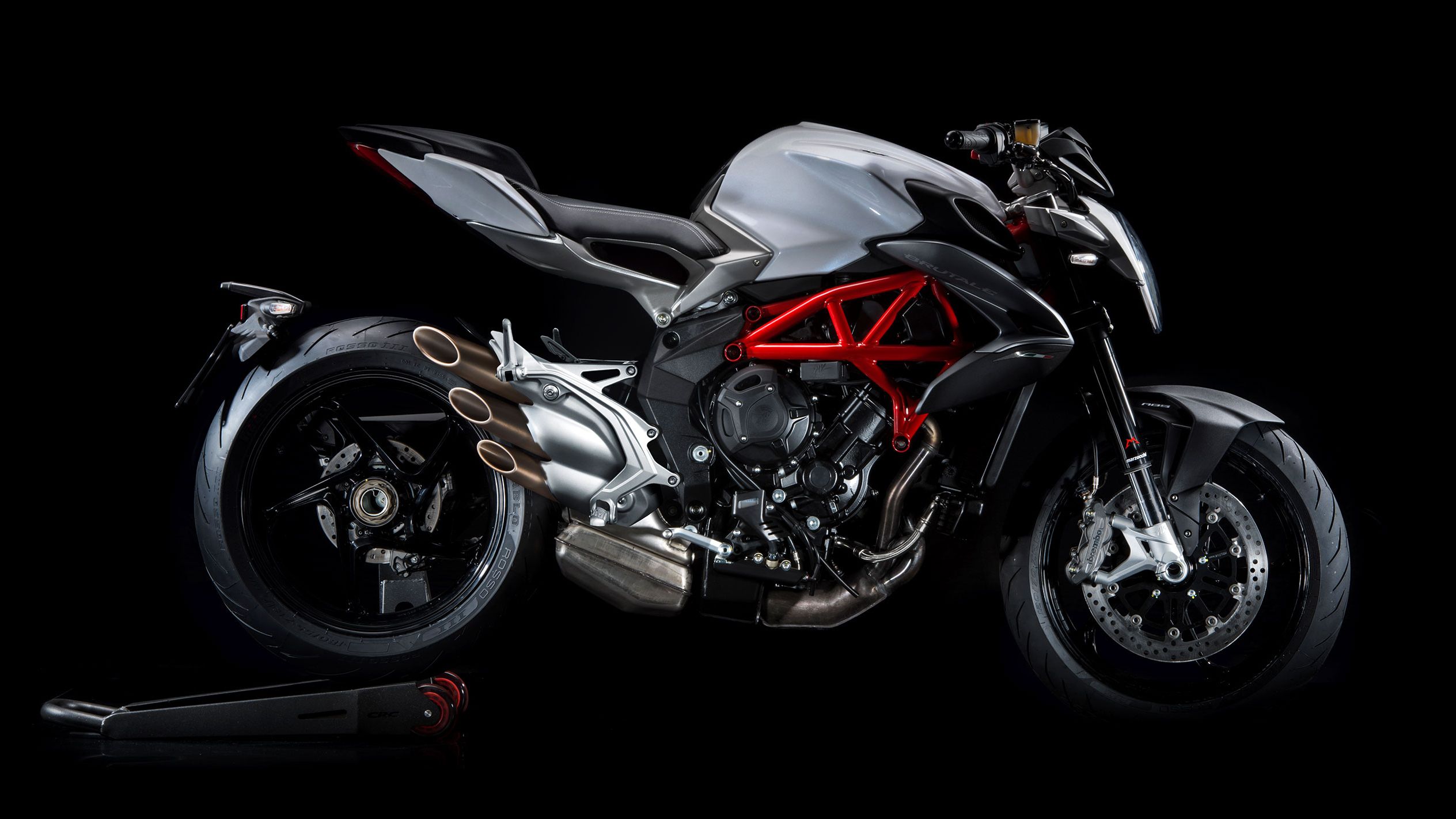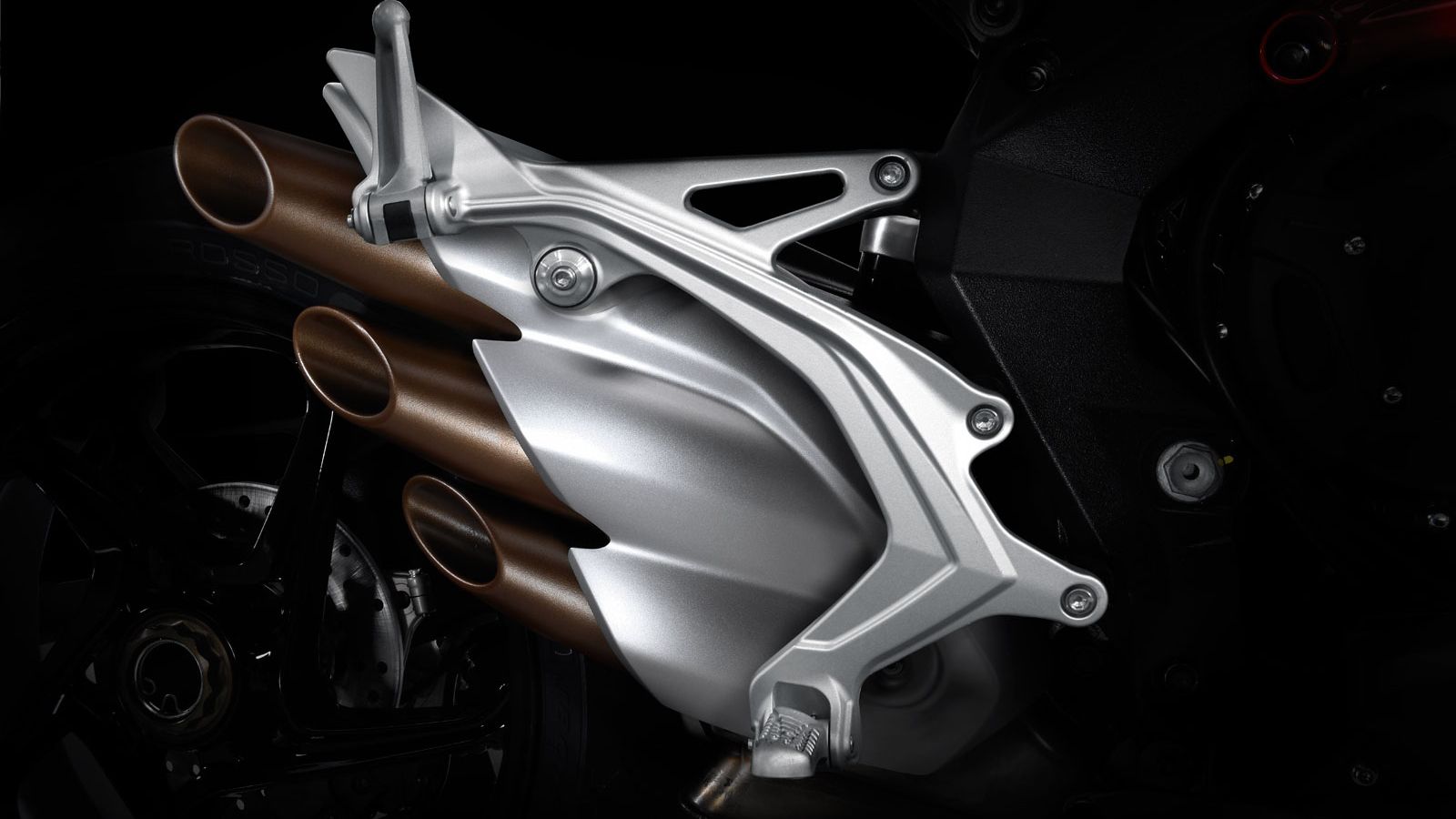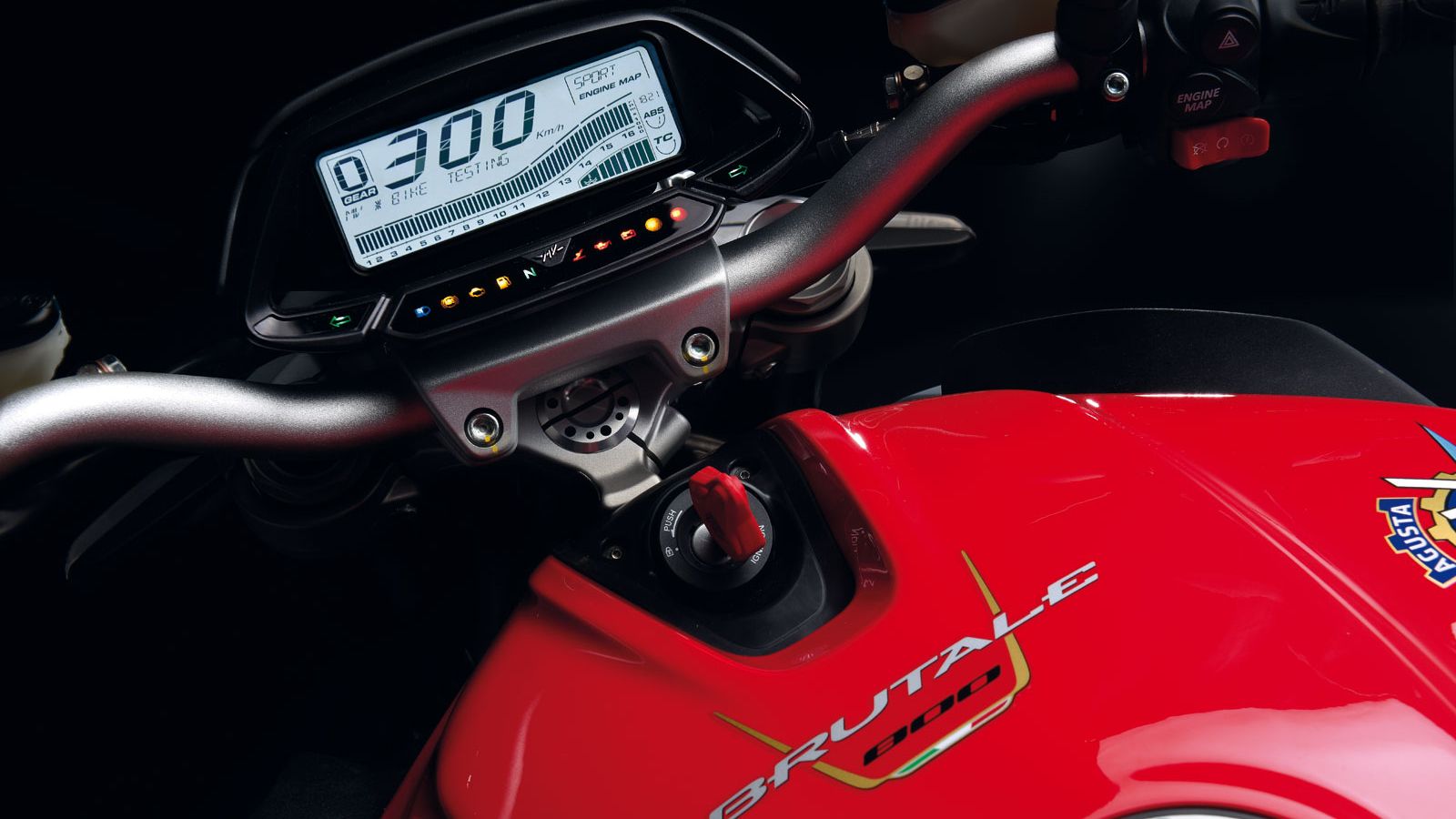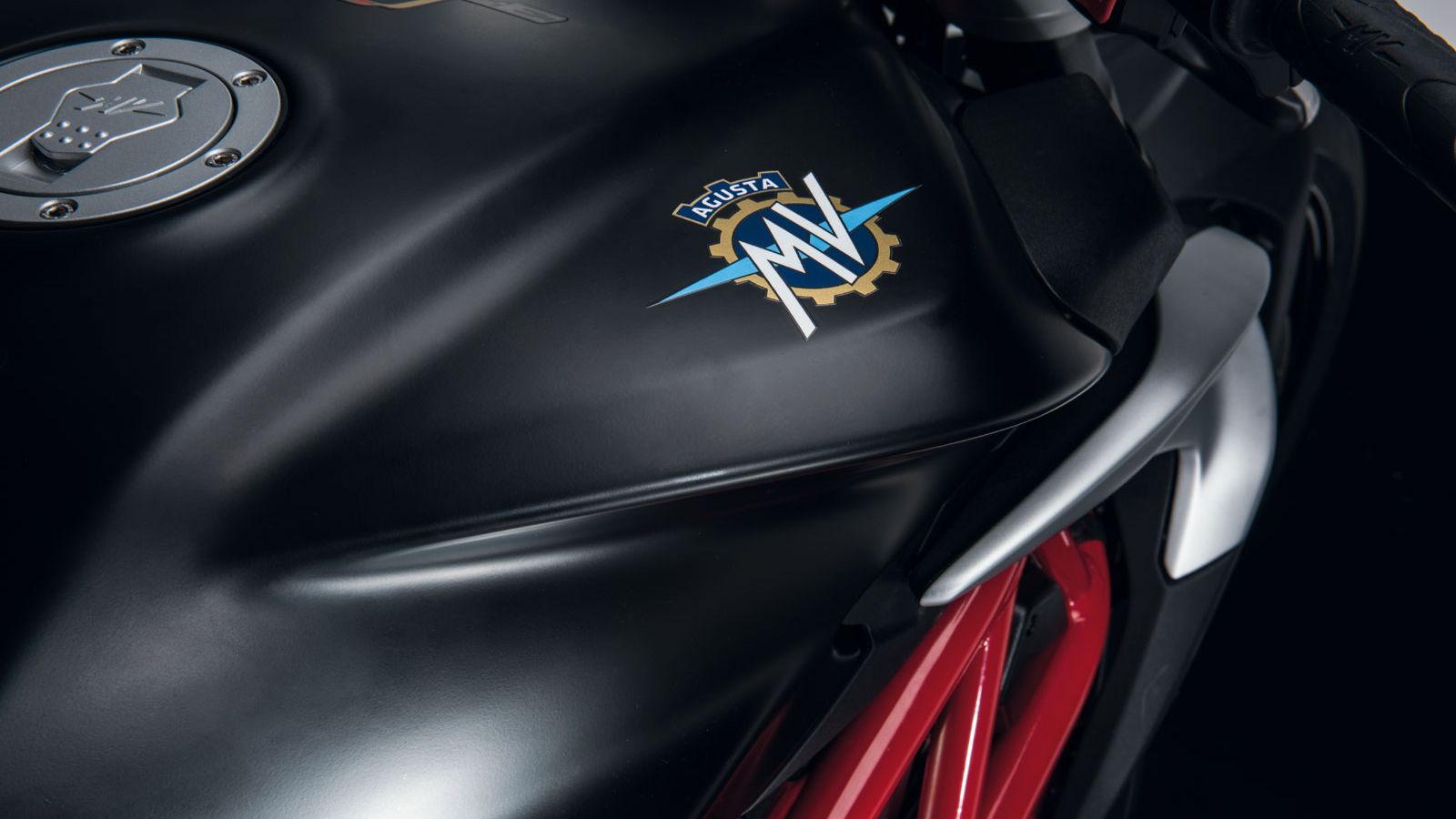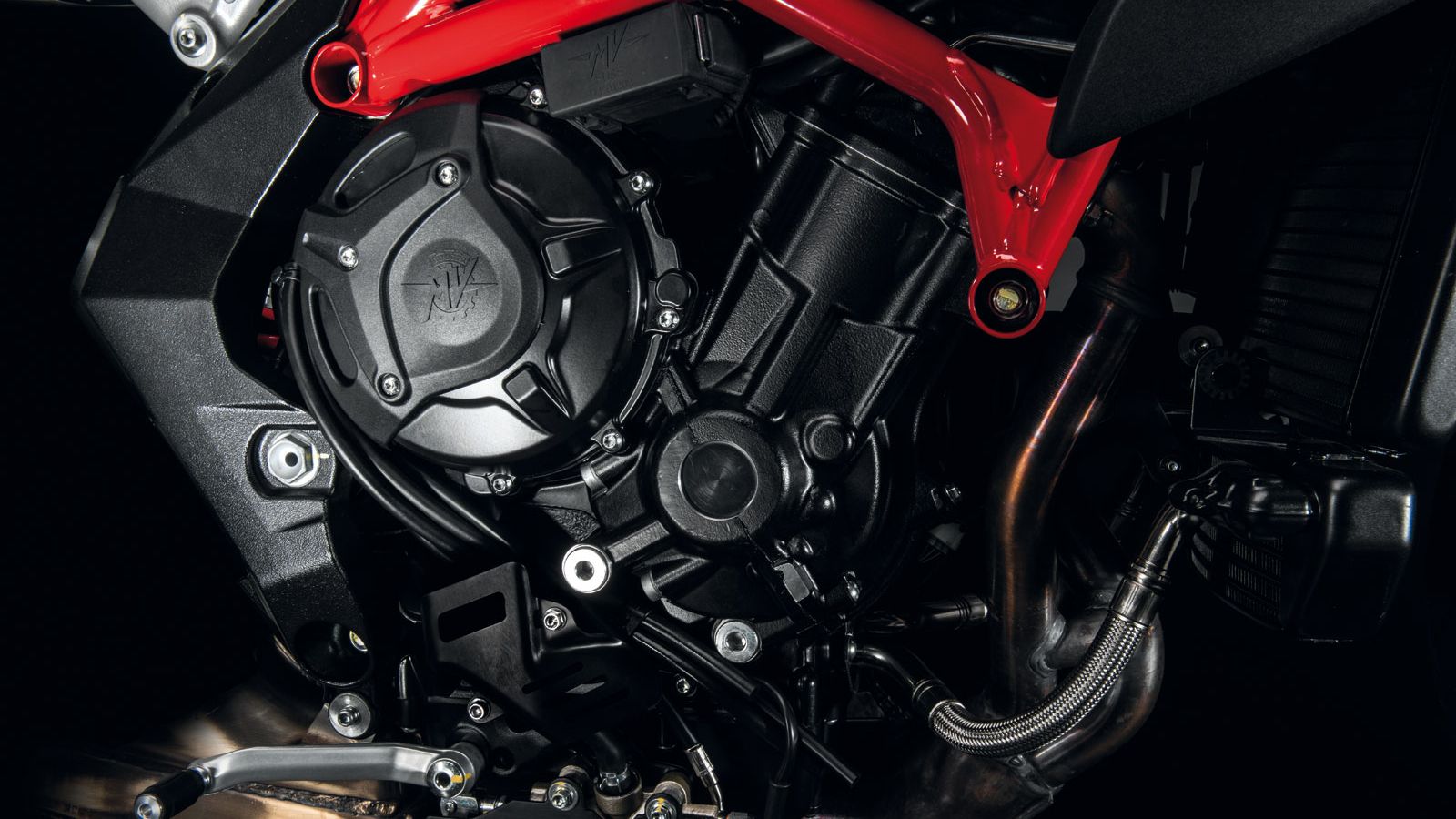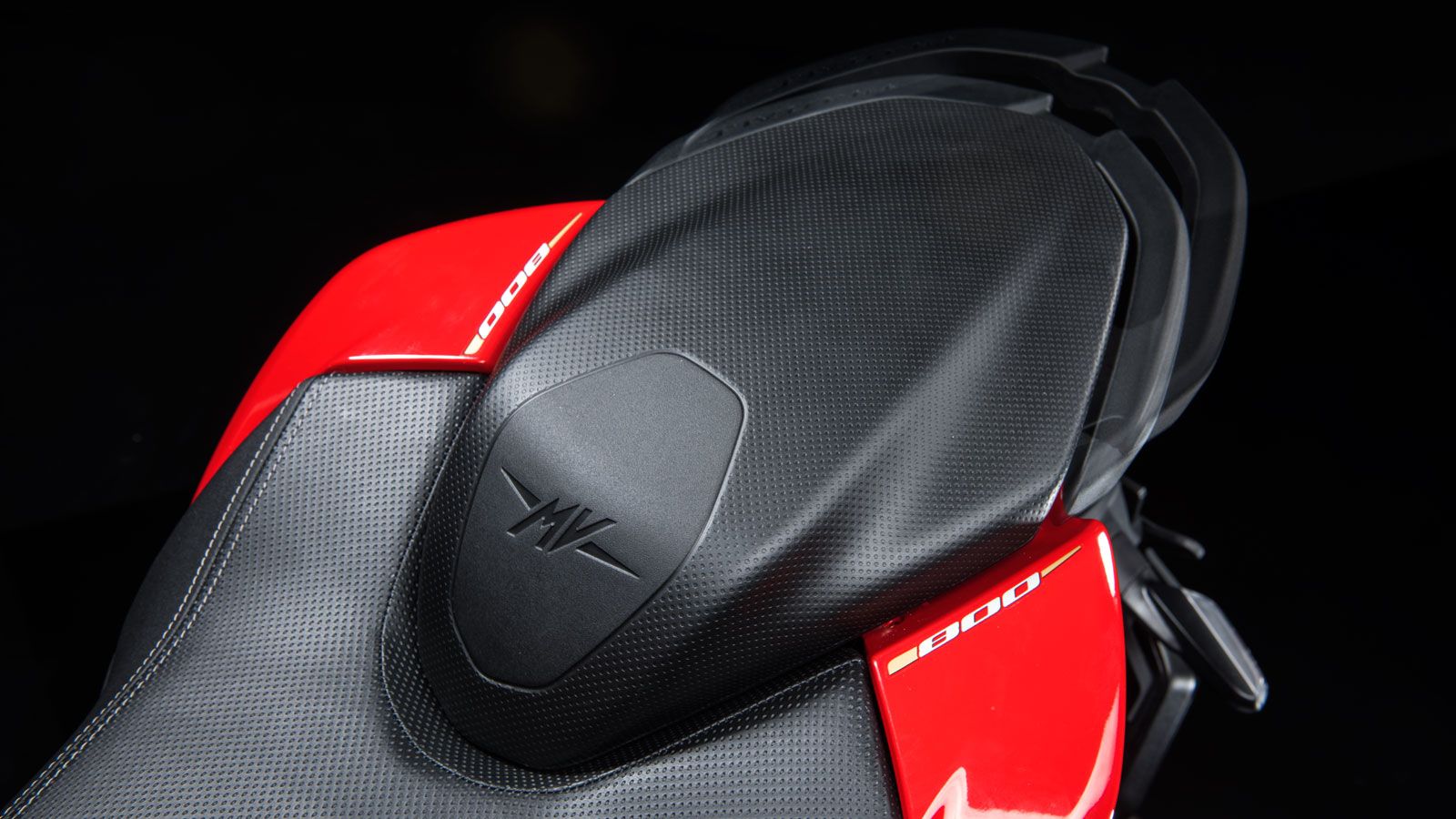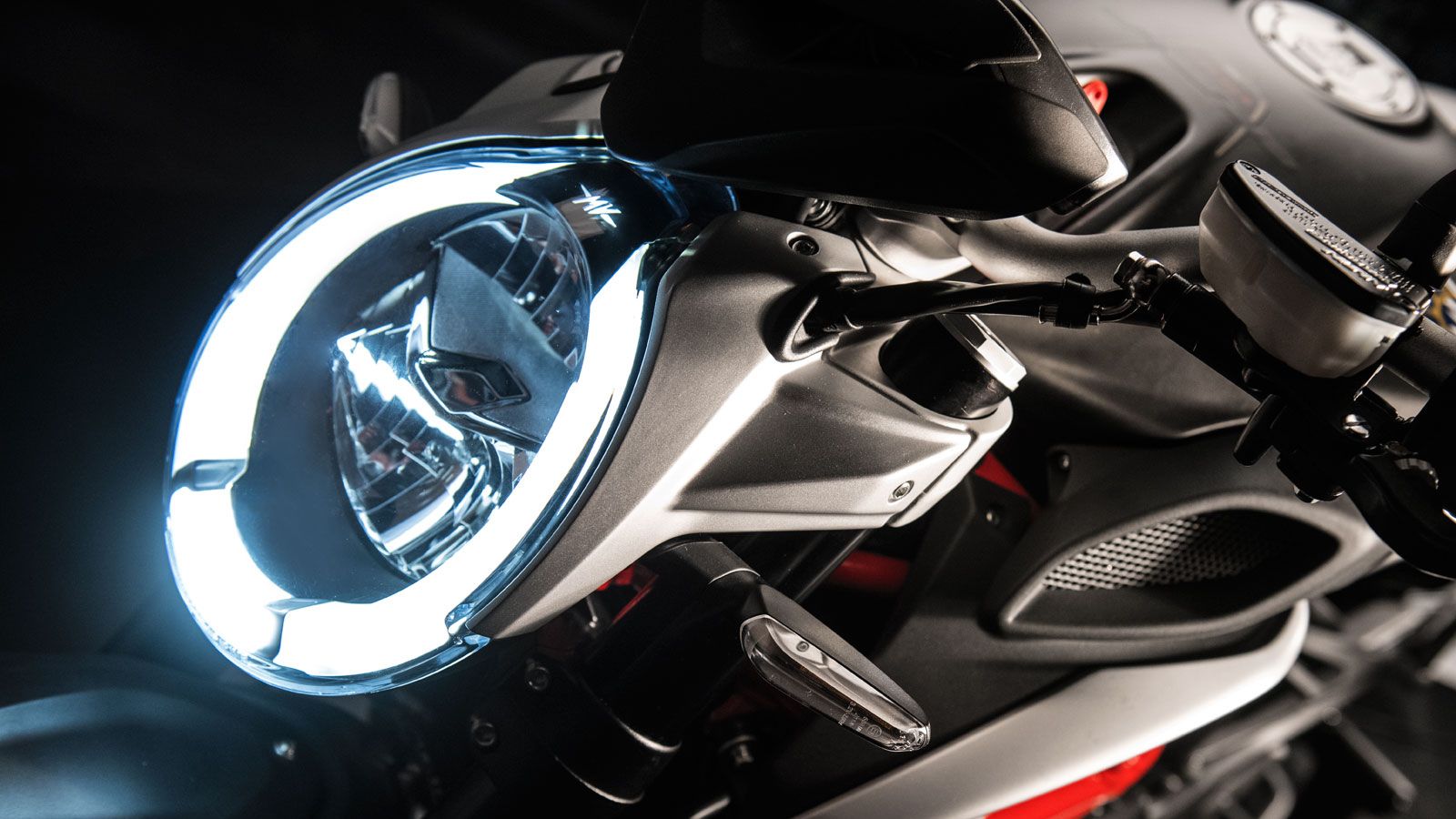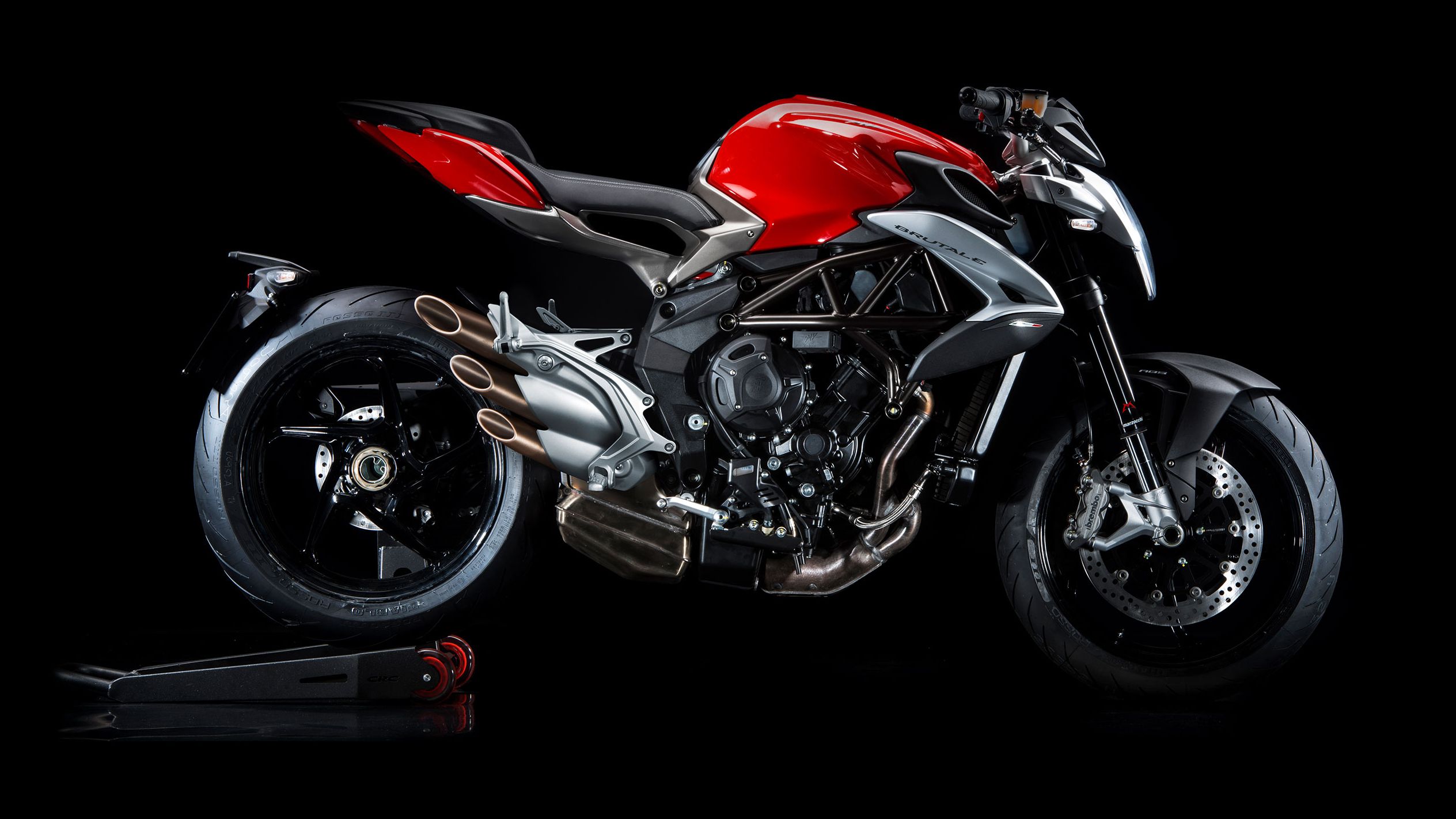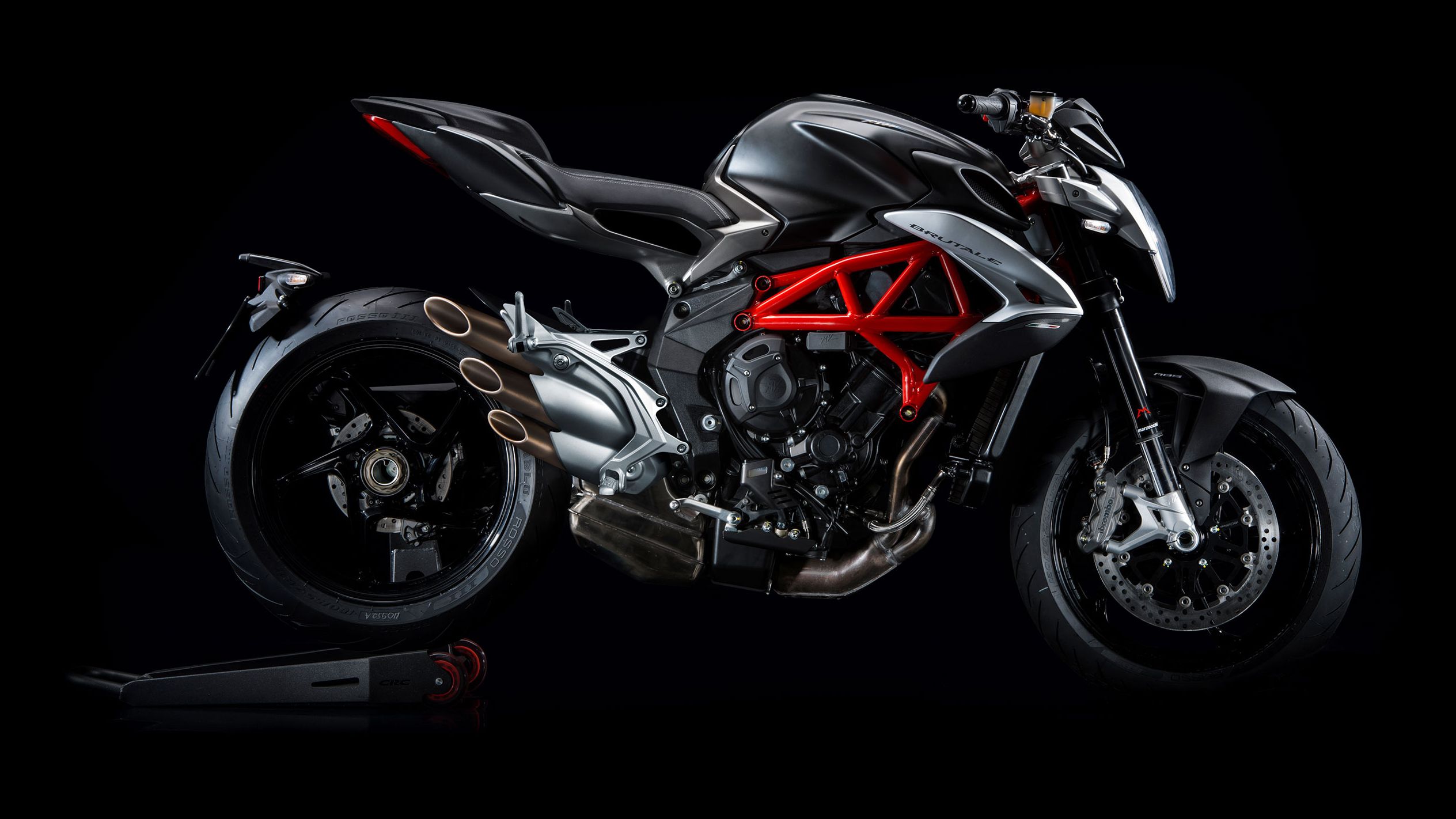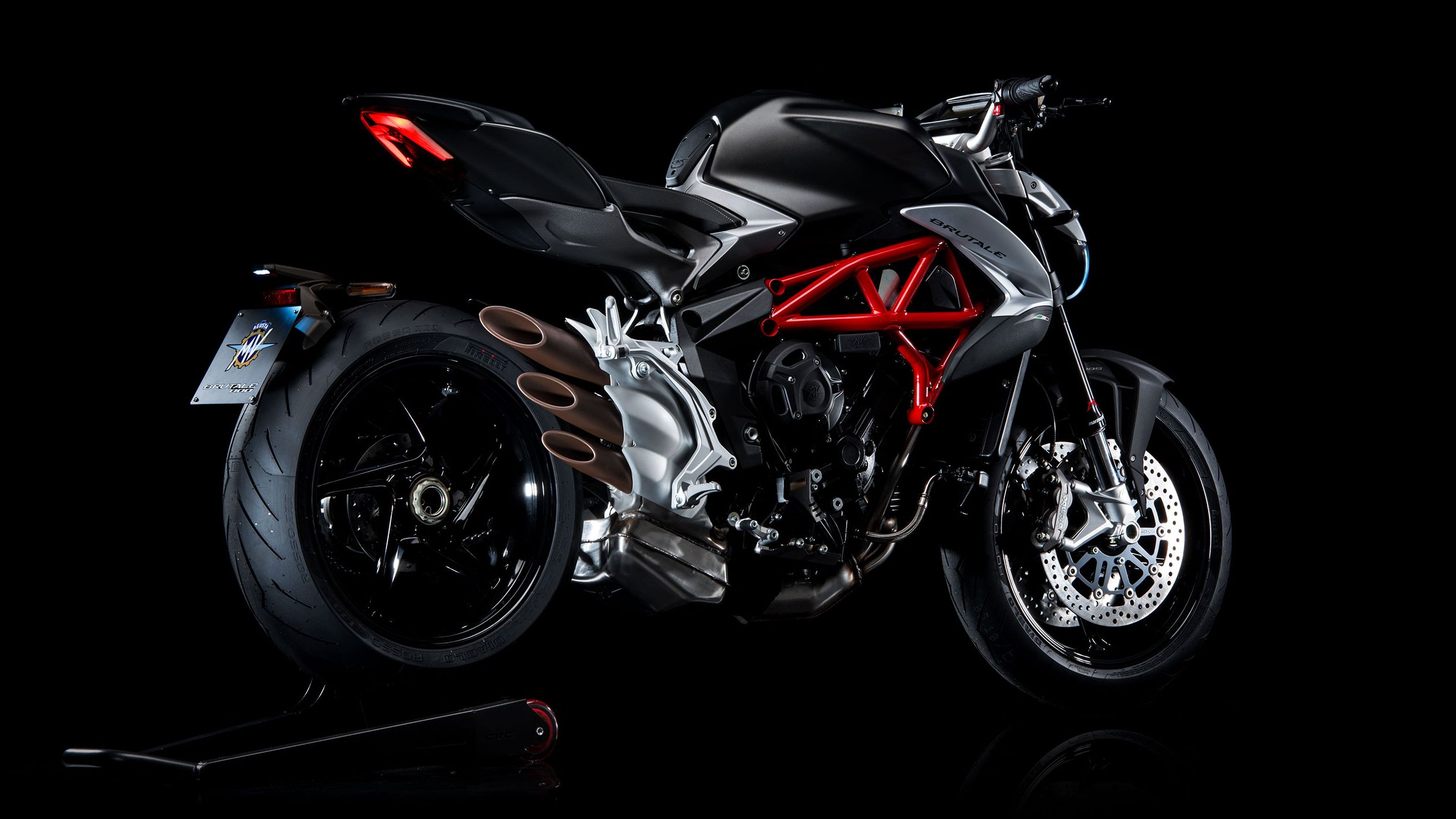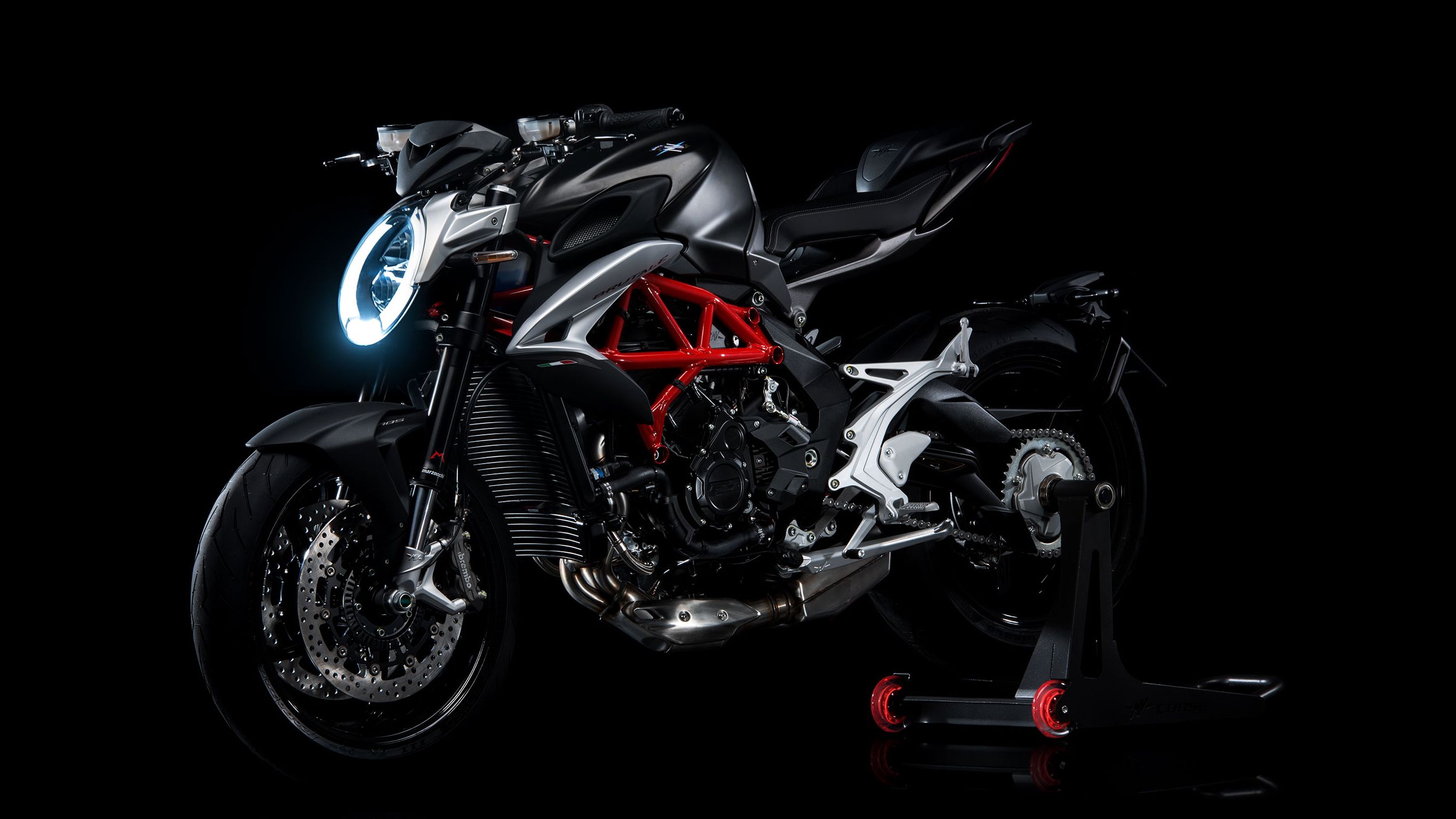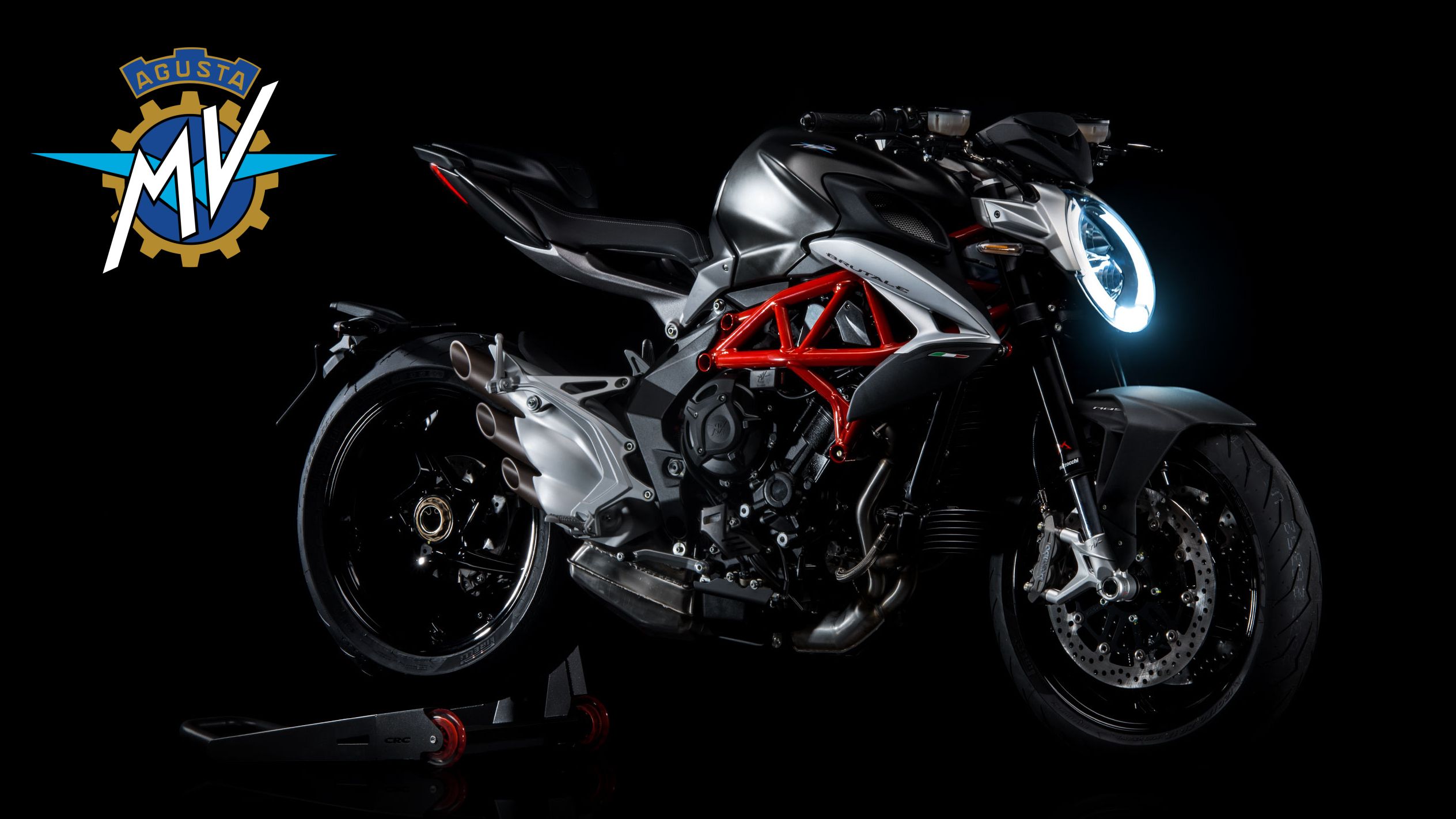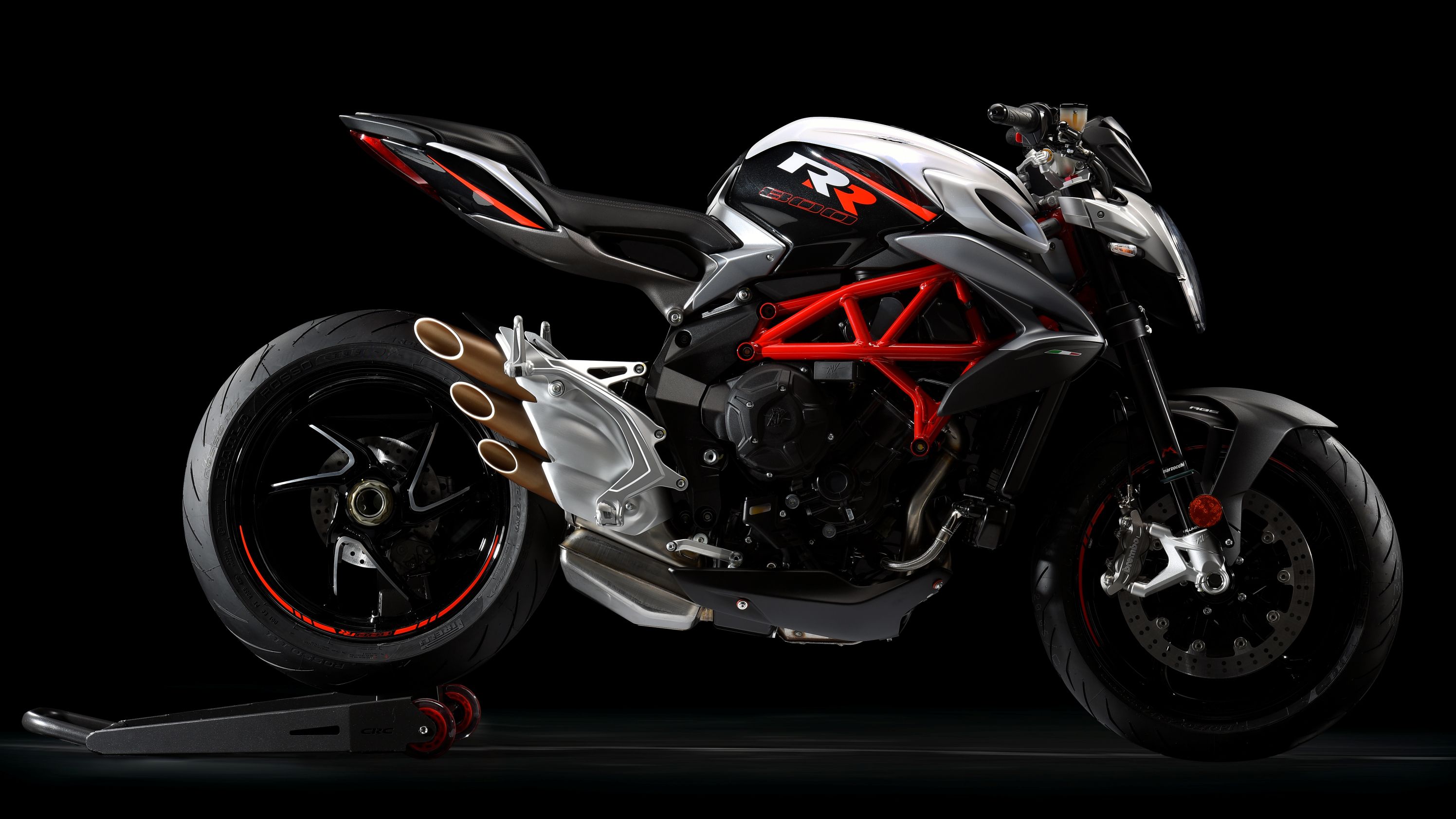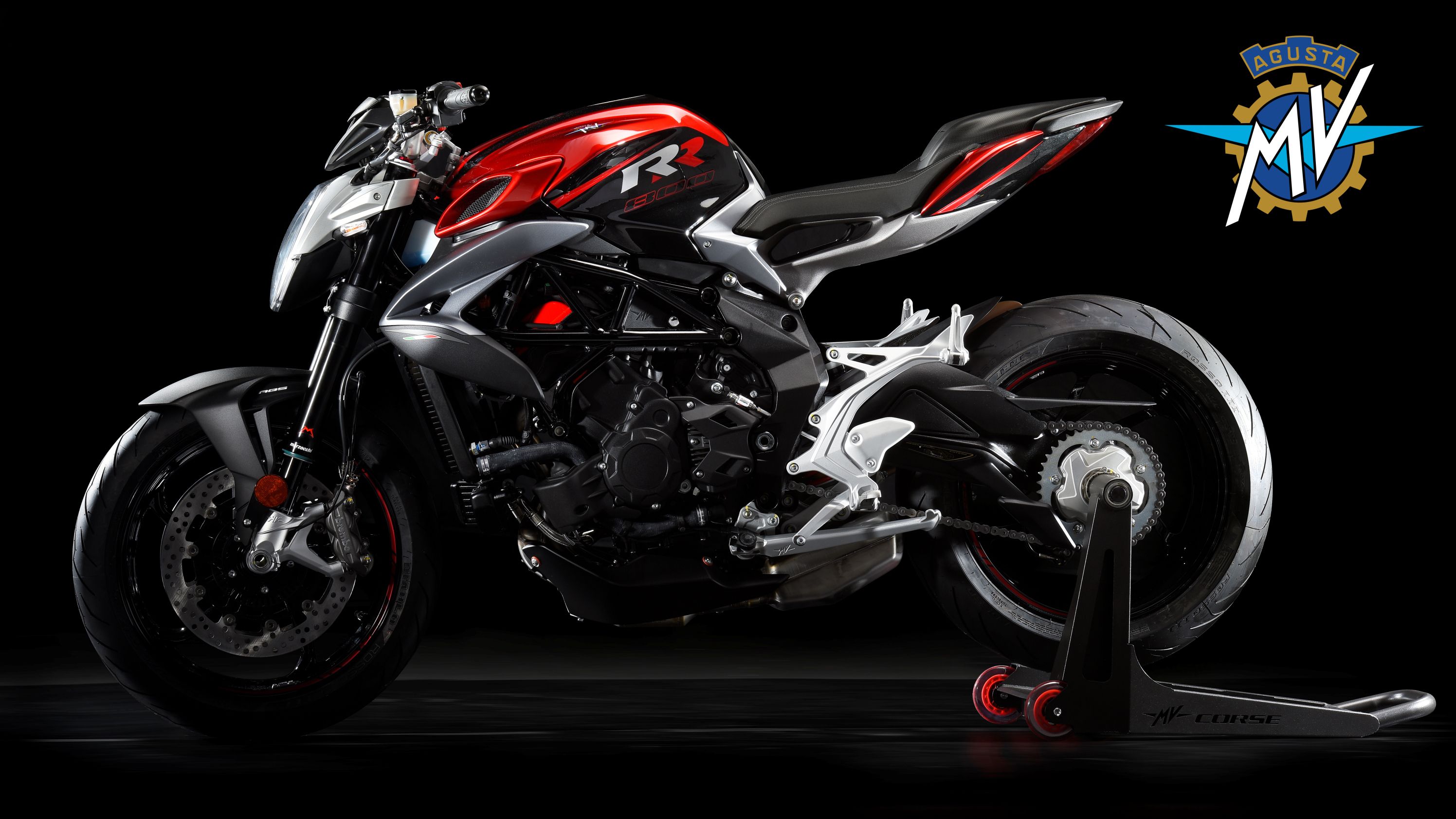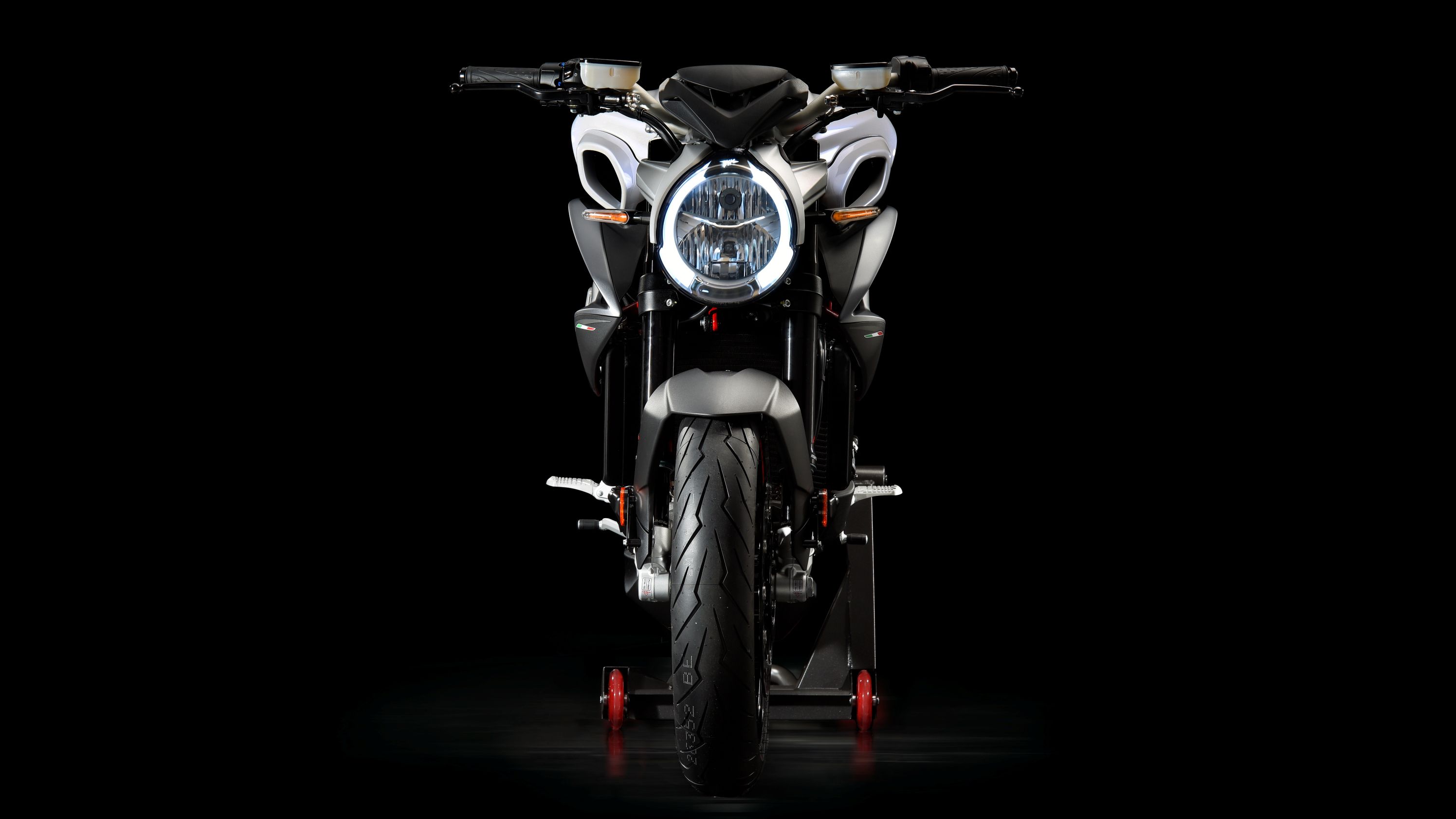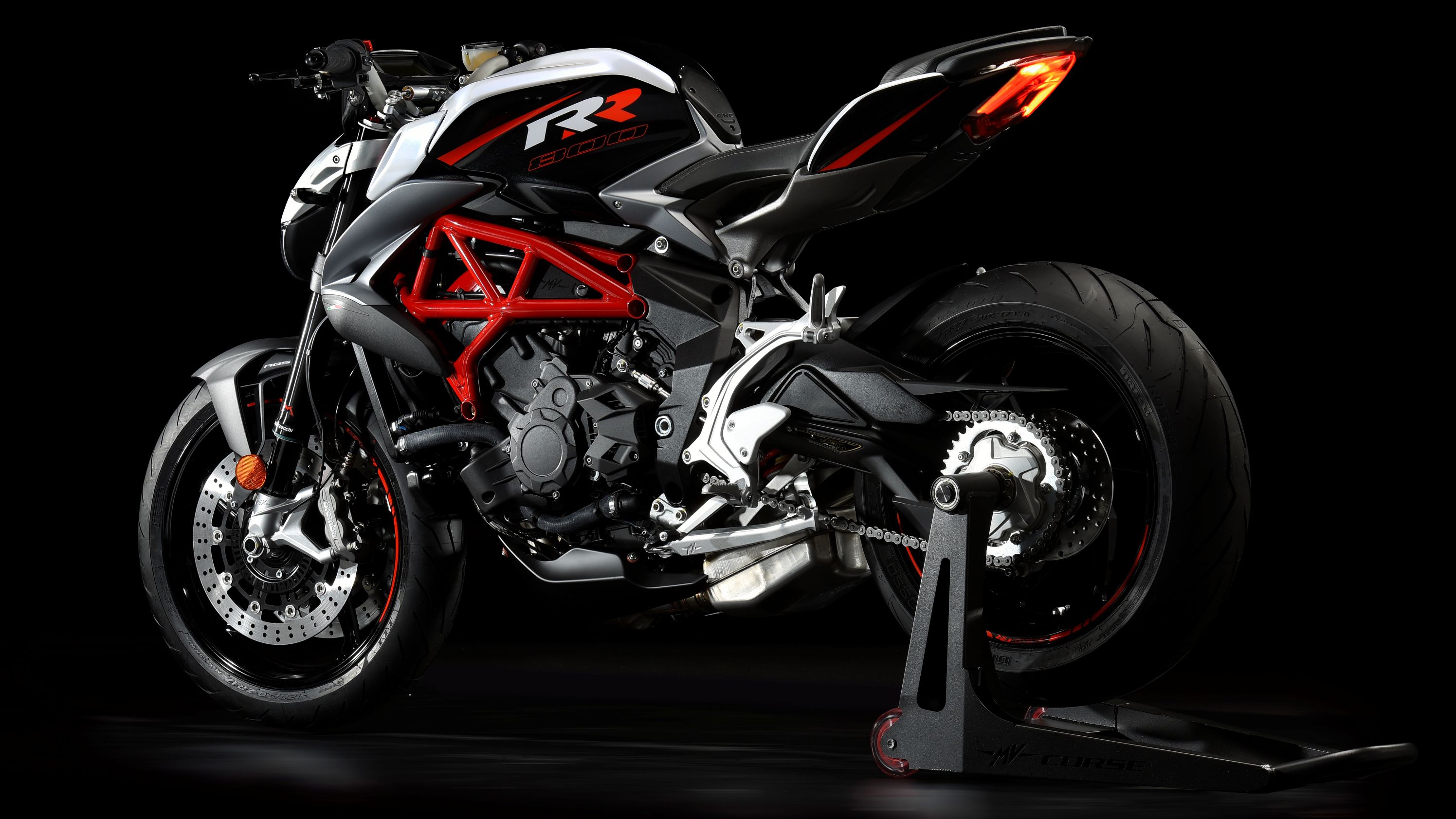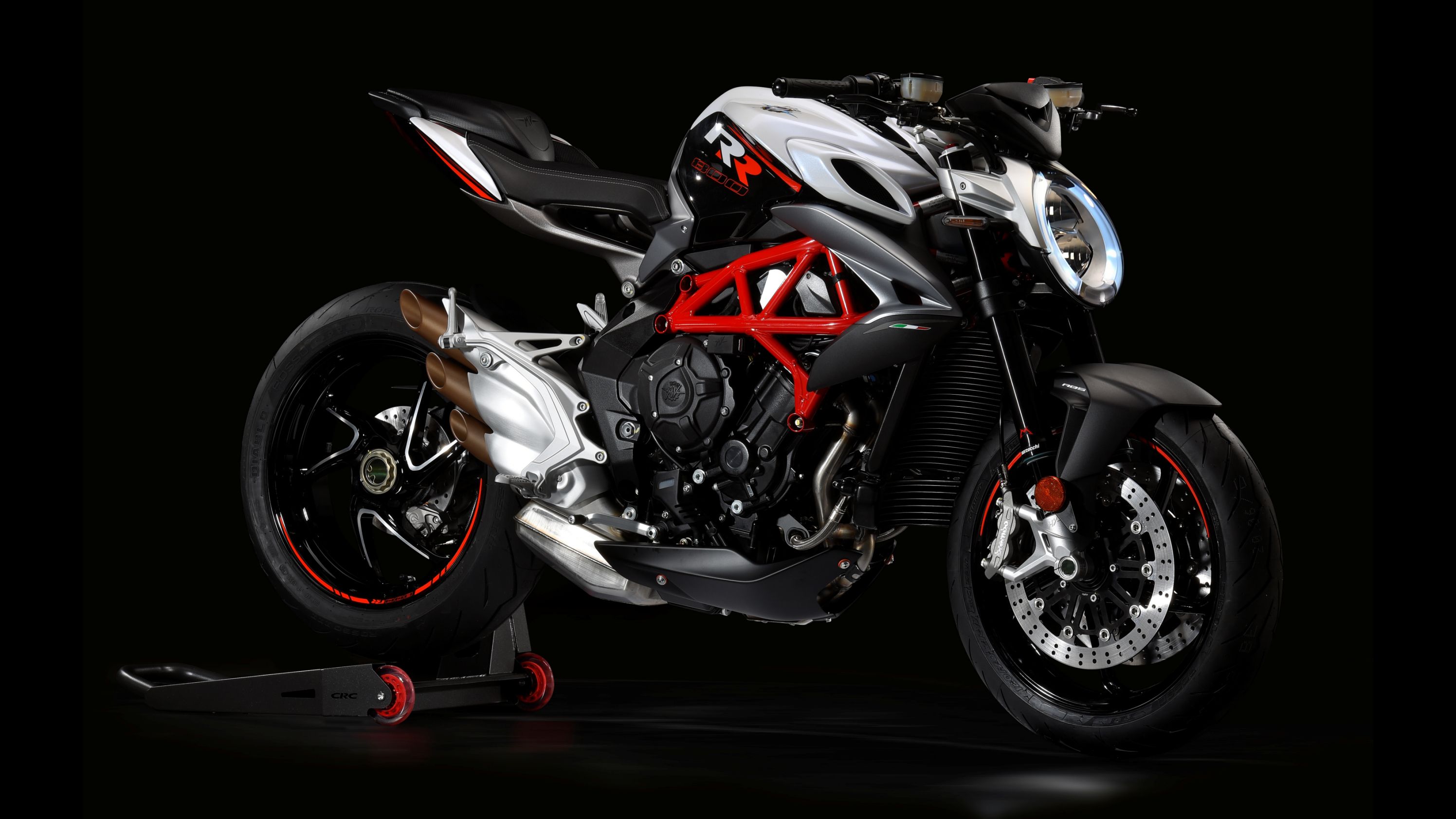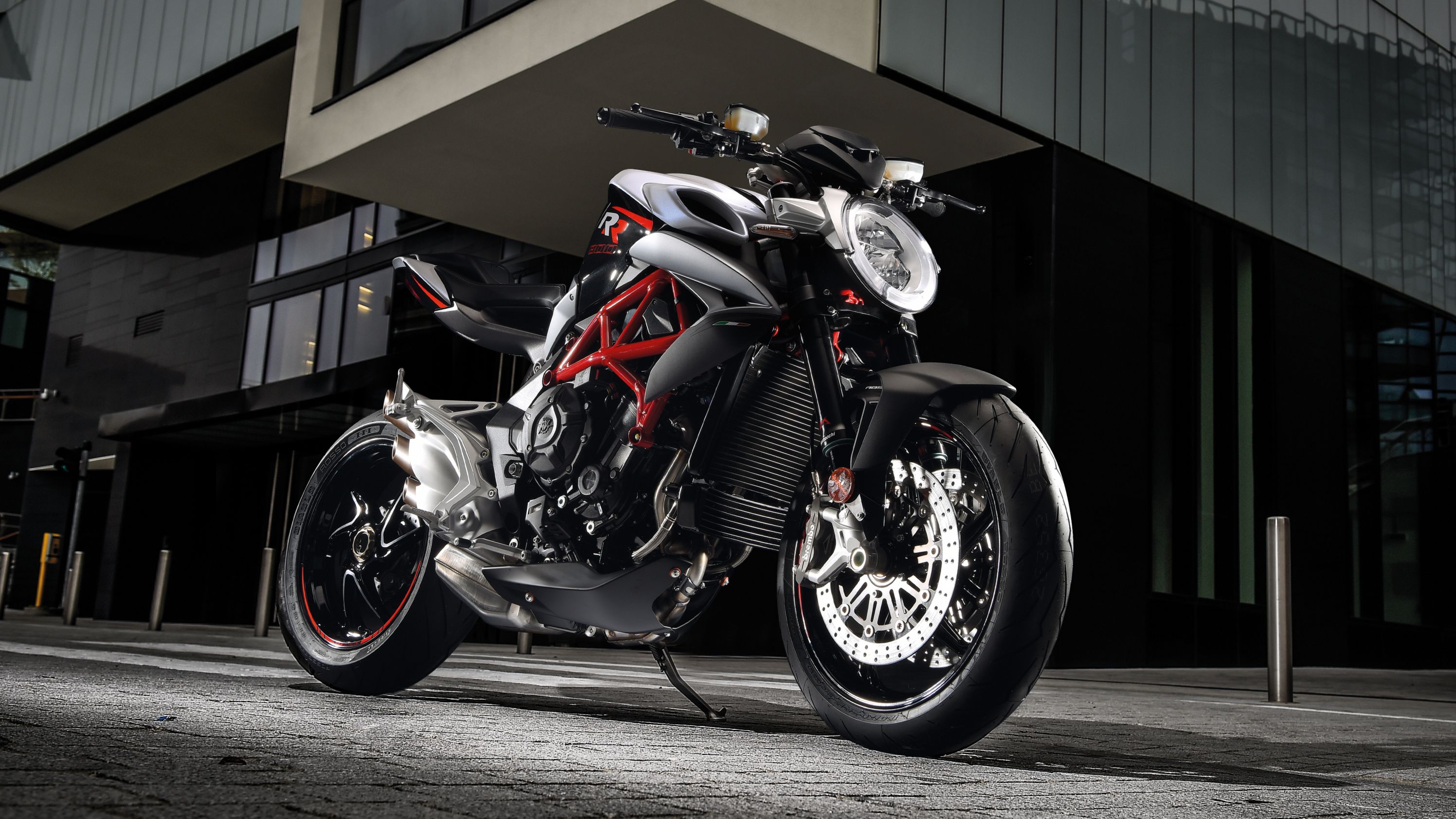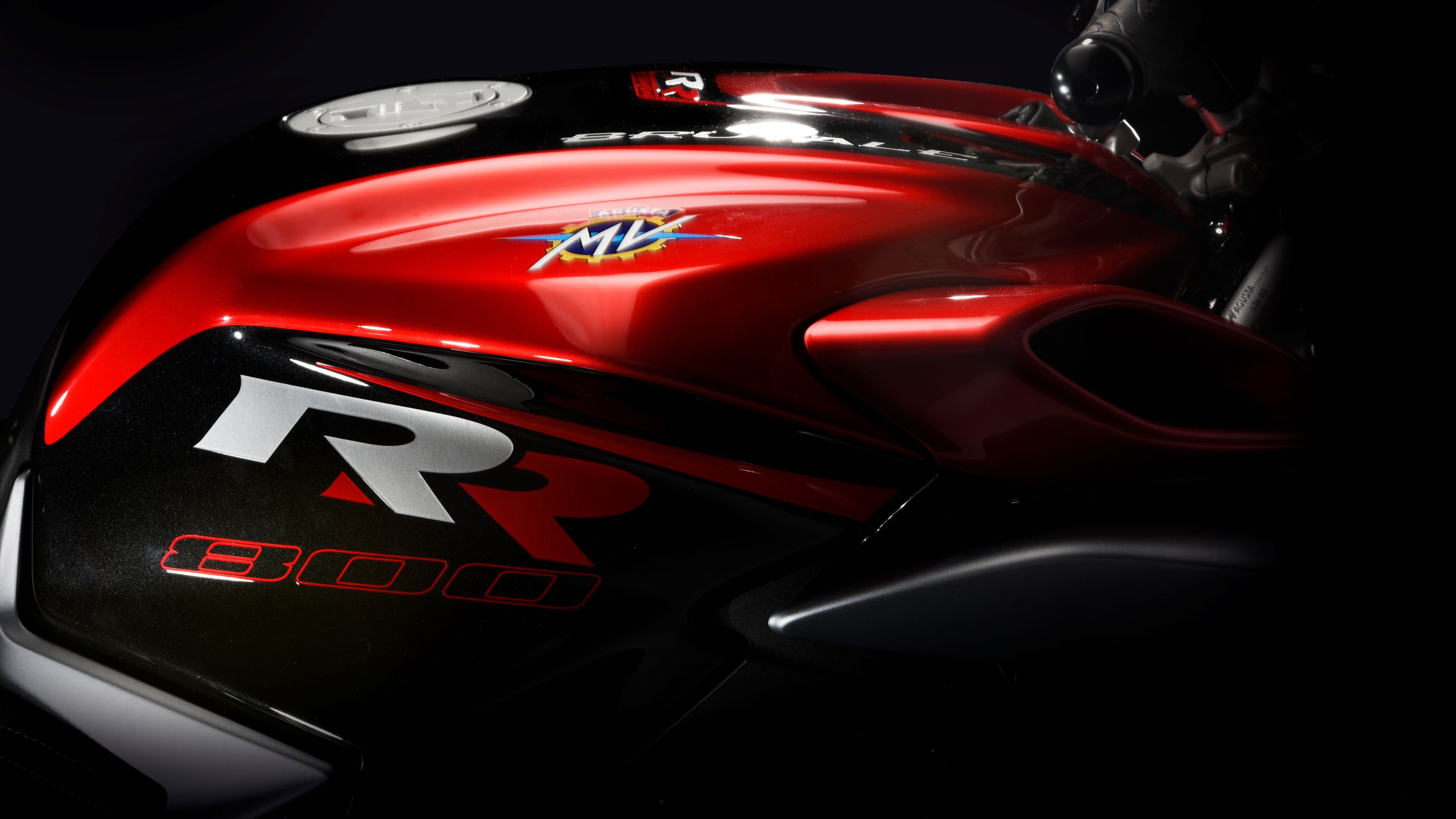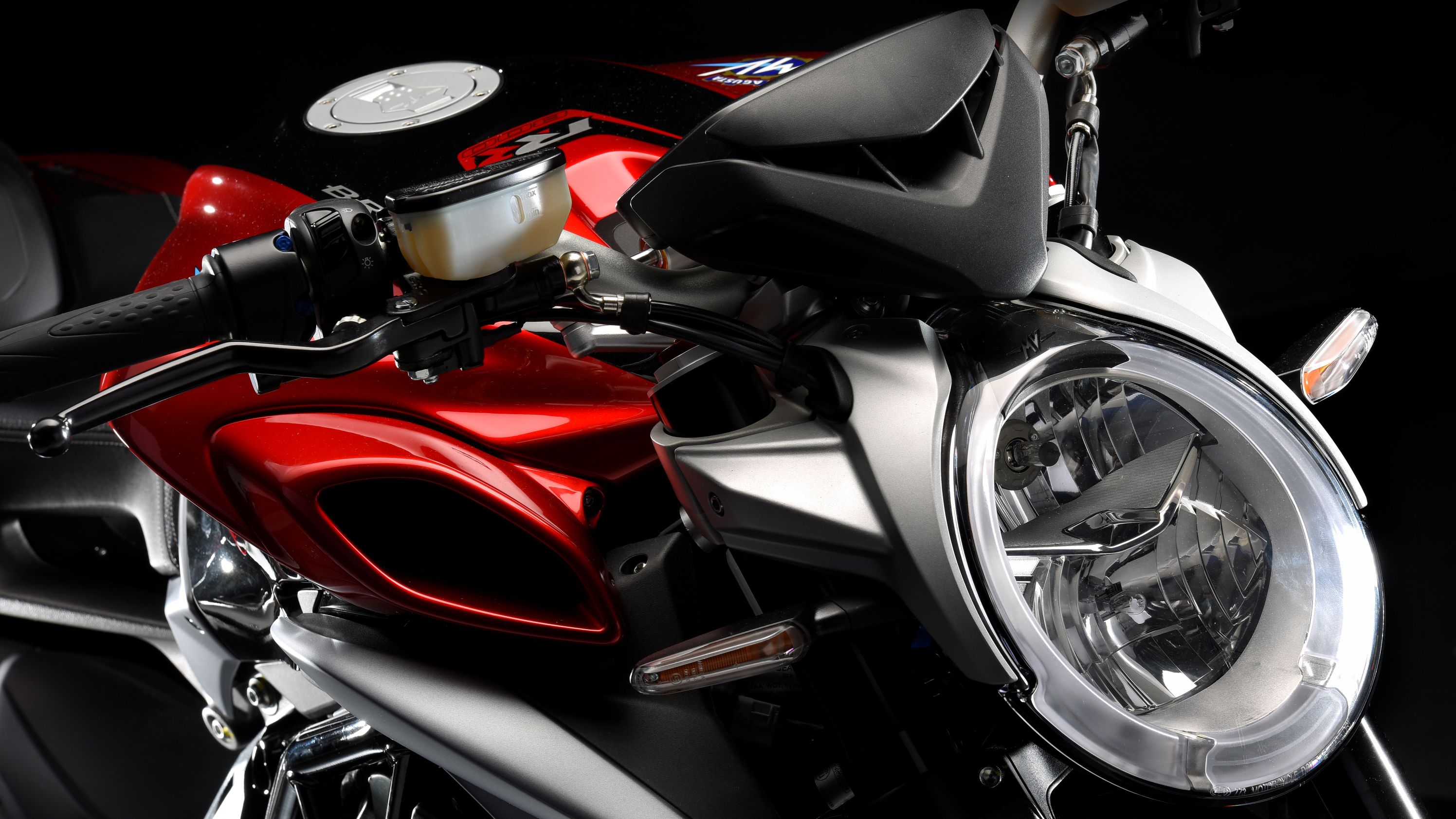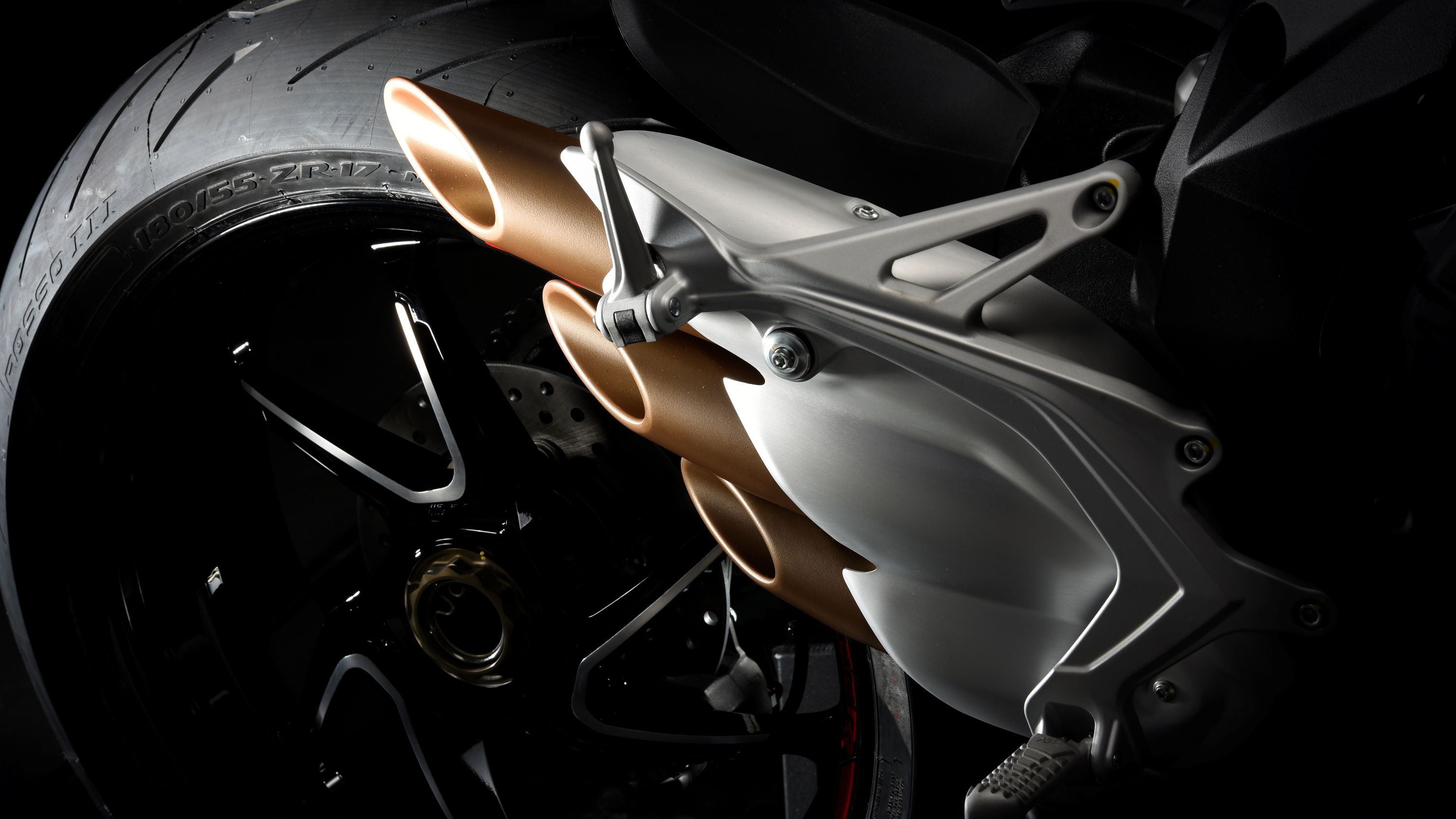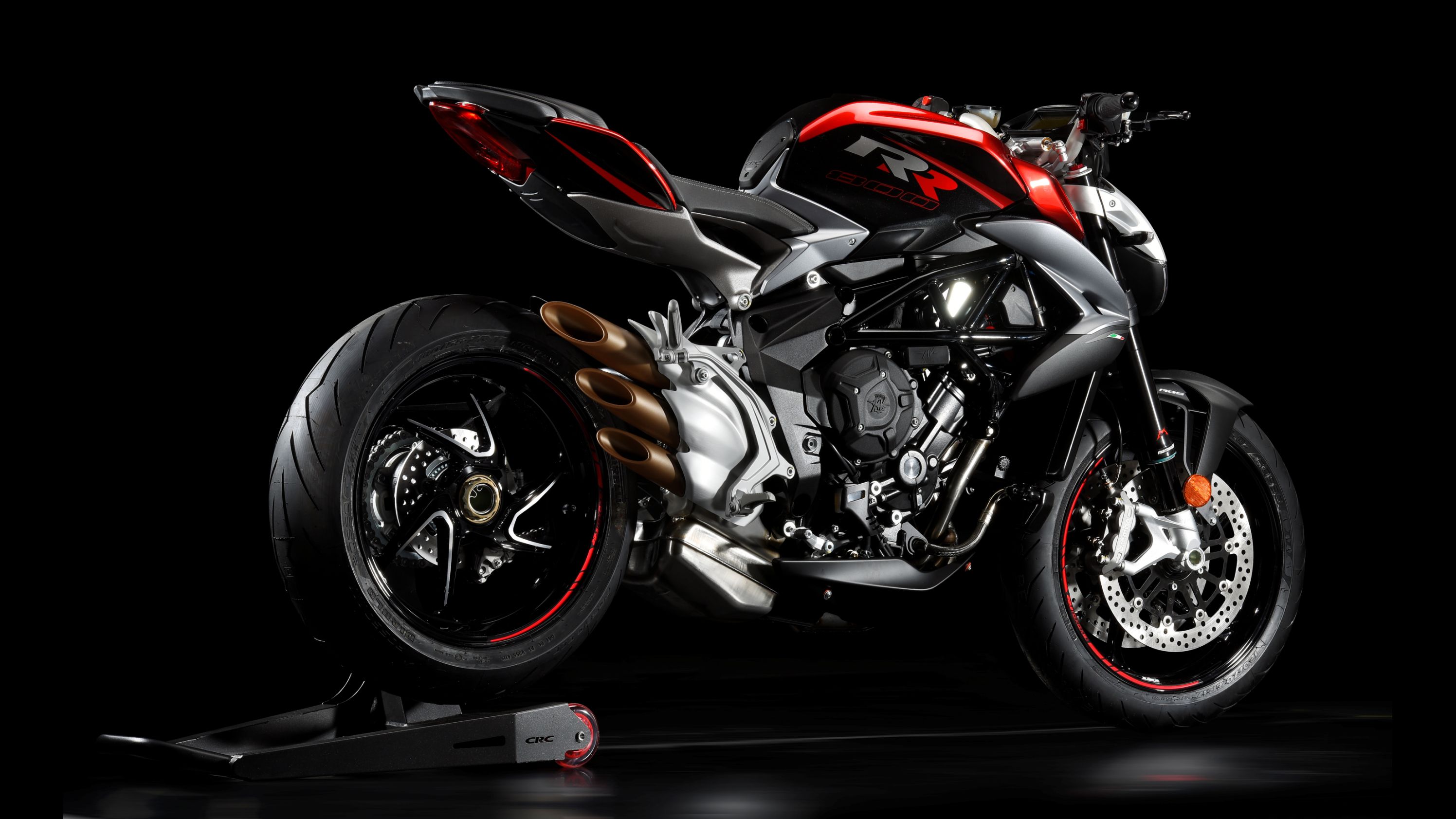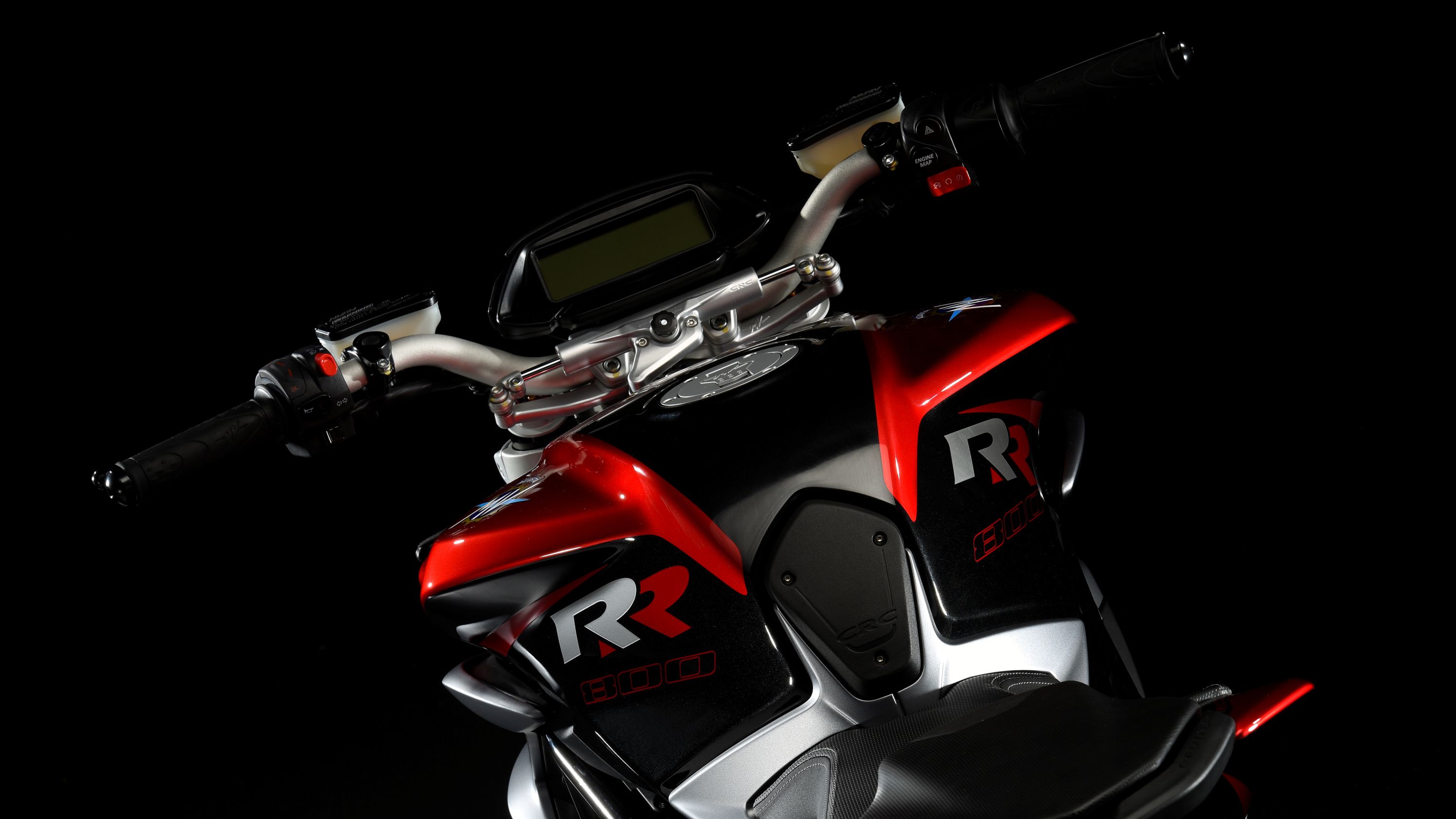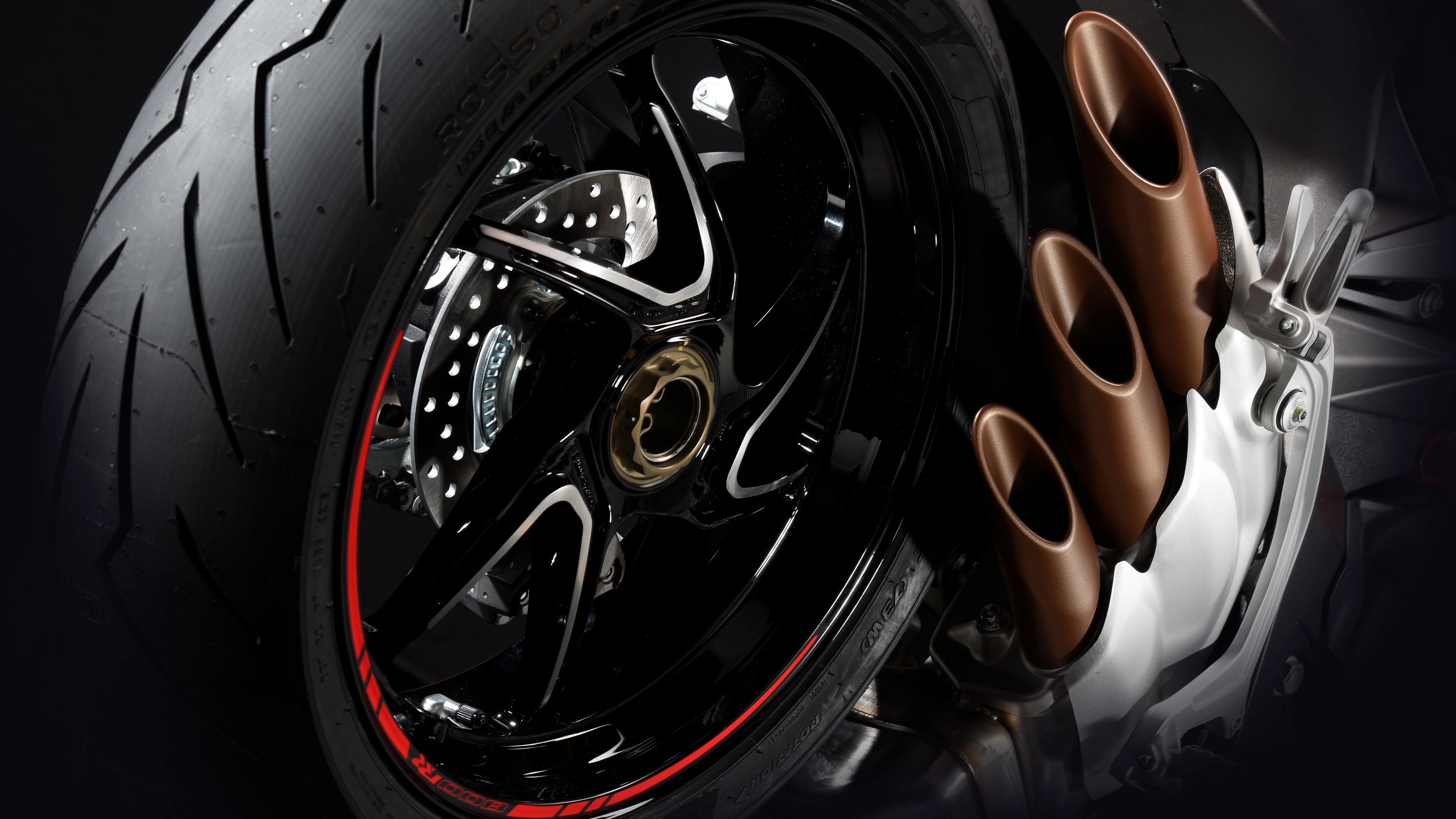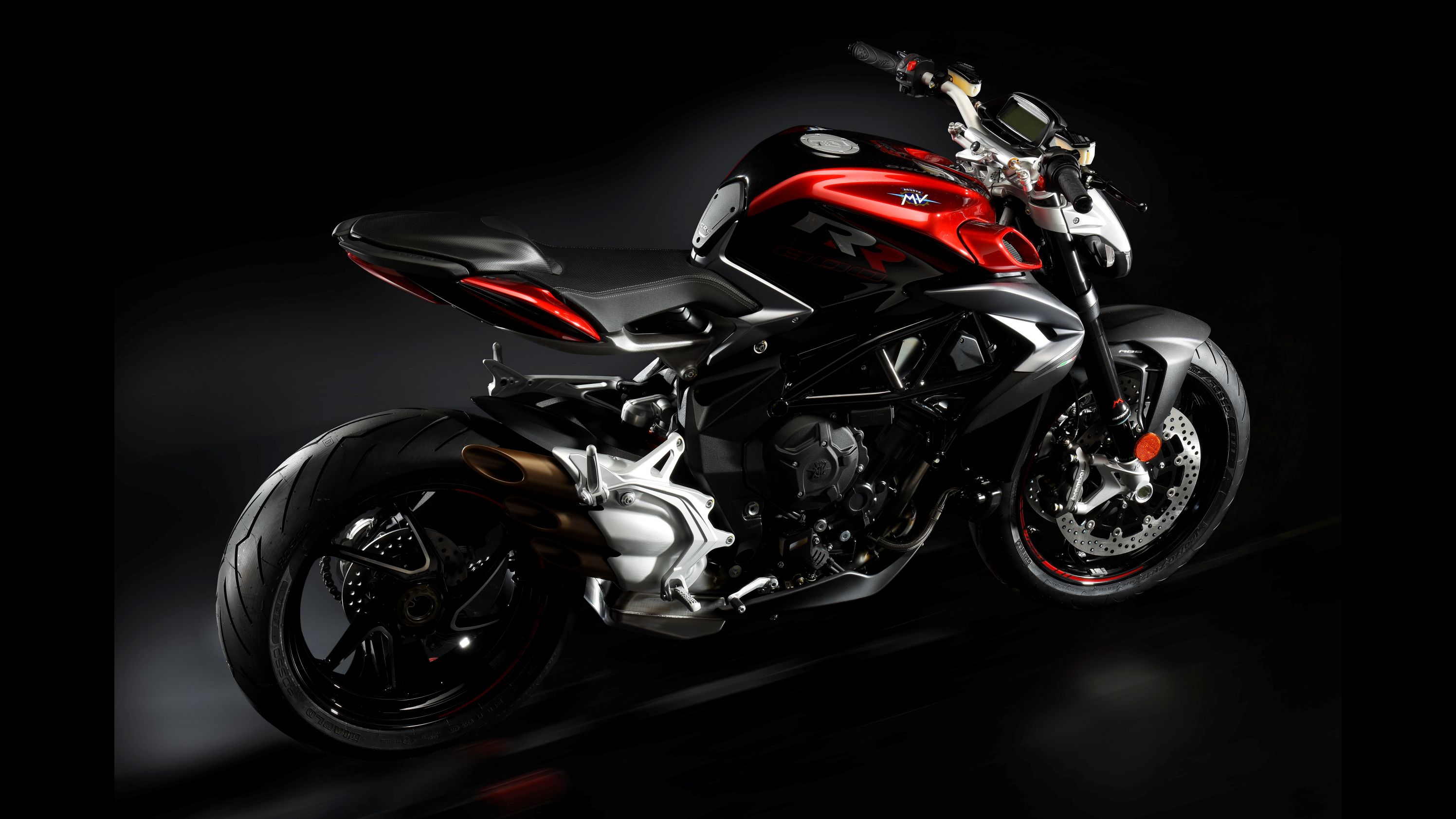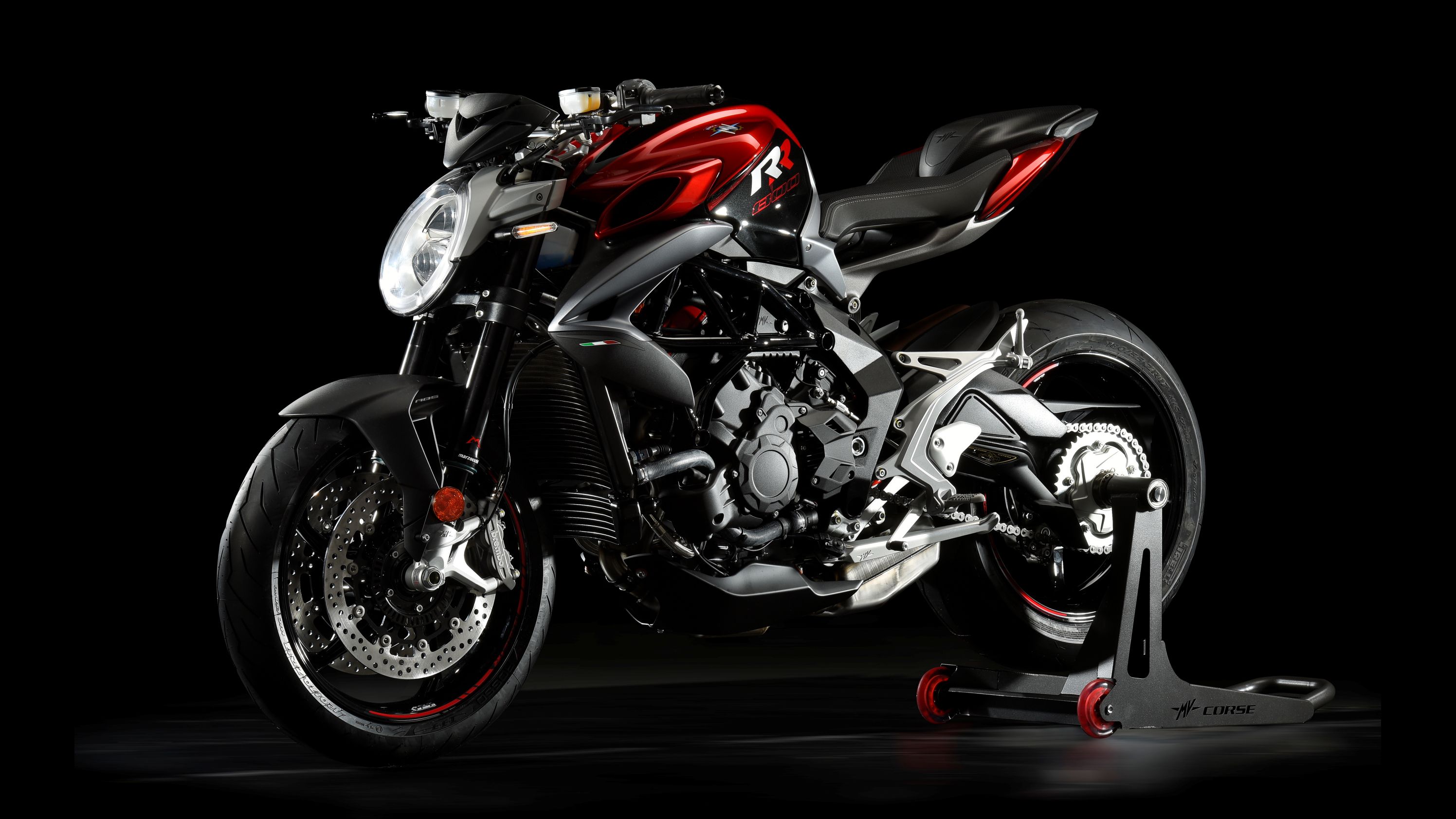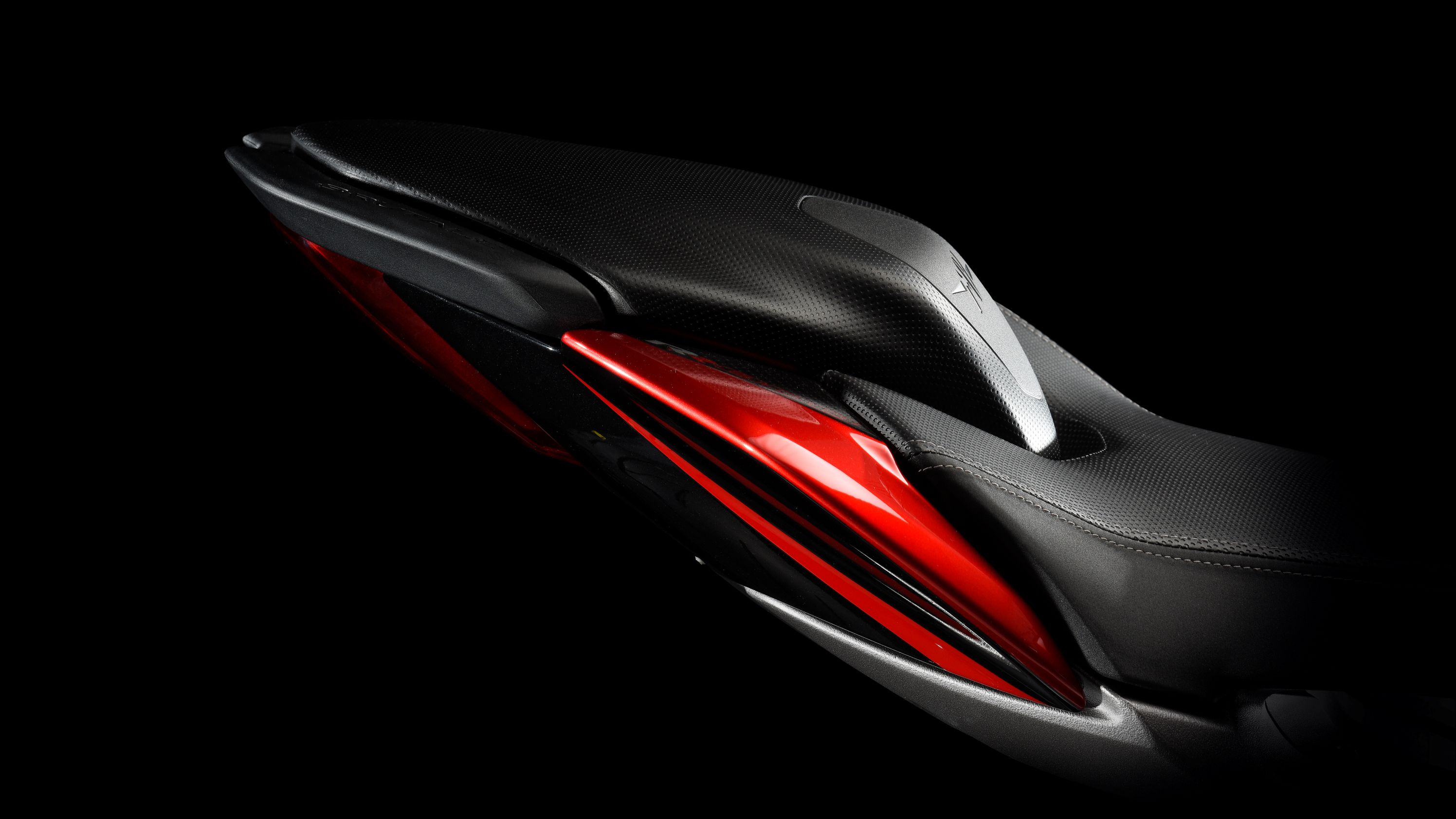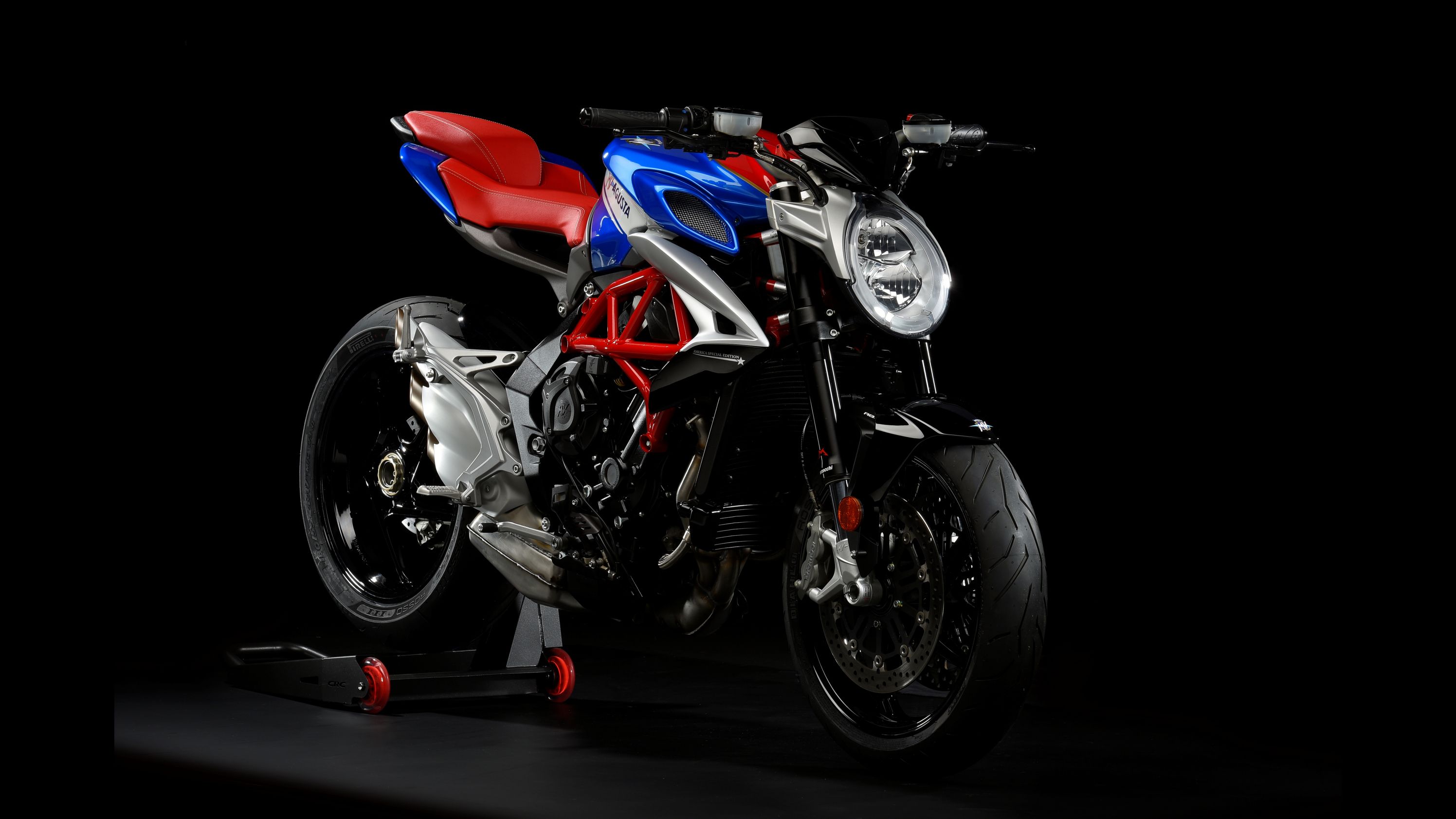MV Agusta introduced the world to its Brutale family back in 2003, and we've been smitten ever since. Racy good looks and Italian performance have been the hallmarks of the line, and the factory doubled down in 2016 with a heavily updated version of its 800 and the even more race-tastic 800 RR. The revisions brought changes from the bones up with a completely reworked frame to carry the improved engine, and a whole passel of electronic features to help you keep it all under control. Riders can expect around 108-horsepower from the base 800, and even more from the RR, so these new kids on the block definitely uphold the reputation for performance established by earlier incarnations. I've been looking forward to getting to know the new Brutales, and now that I have I can say that I wish I'd done it earlier. Read on to find out why.
Continue reading for my review of the MV Agusta Brutale 800 and Brutale 800 RR.
2016 - 2017 MV Agusta Brutale 800 / Brutale 800 RR
- Make: Array
- Model: 2016 - 2017 MV Agusta Brutale 800 / Brutale 800 RR
- Segment: Array
- Engine/Motor: inline-3
- [do not use] Vehicle Model: Array
Design
The Meccanica Verghera Agusta has been around as a motorcycle manufacturer since 1945. Since then, this Italian heavyweight has really made a name for itself as a builder, and has left a definite impression on the motorcycle-racing world. Though the company has seen some ups and downs, at least they still operate under their own flag, and haven't fallen under the expansive Piaggio Group umbrella that now owns several of the other major Italian manufacturers to include Aprilia and Moto Guzzi.
Lean as a snake, the Brutale comes built like a wedge of cheese, which is to say “all up front” with a narrow waist and rear end that quickly tapers off to nothing. As with most naked bikes, there's a dearth of body panels, so everything is out in the open with very little in the way of mystery. A small pair of boomerang-shaped cheek fairings cover the shoulders of the exposed Trellis frame and provide a little artistic touch, but little else. Typical in naked-bike fashion, the headlight can is absolutely minimal with tiny, standoff-style turn signals and a smart-looking, horseshoe-shaped daytime running light encircling the teardrop-shaped headlight.
A 4.36-gallon fuel tank lifts the flylines ahead of a precipitous drop to the gel-padded saddle, and a short rise to the P-pad serves as a much-needed butt-retention feature for the rider. All very slick and sporty, but I gotta say passenger comfort was not a front-burner consideration for the design team as the pillion is absolutely minimal.
One thing I really like is that the factory opted for an ultra-clean finish with a hugger-type rear fender/tagholder rather than going the ugly, subframe-mount mudguard route. I swear, there's nothing worse than a bike that looks like pure sex on two wheels all the way up to the time that you look at the rear end, and it's amazing how much difference a nice hugger can make. Standoff turn-signals ride on the hugger while the taillight comes tucked away under the subframe so the clean looks don't lose any ground to the rear lights.
Wider bars and lower pegs place the rider in a relatively comfortable position, but the pegs drag early in the corners, so you can leave your elbow pads at home 'cause you ain't going to need them with this ride.
Brutale 800 America
For 2017, MV Agusta brings back the “America” tag with the Special Edition Brutale 800 America. Metallic Blue livery gives the ride a unique hue with a star-spangled fuel tank and gilt seat stitching to further set it apart from the pack. Each unit comes with a unique production number -- one for each of the 50 states -- that is laser etched into the tripletree along with the “America Special Edition” legend. This ties the current Brutale line in with MVA's historical America trim package that got its start back in 1975 and has seen the light of day but a few times since.
Chassis
(Brutale 800 RR)
ALS steel tubing makes up the welded Trellis frame. The new skeleton does a better job of distributing the stresses and loads, and the only part of the old frame to survive the revamp is the pair of aluminum clamps at the swingarm pivot. A longer frame, stretched swingarm and increased steering rake of 24.5-degrees pushes the wheelbase out to 55.12-inches long with 4.07 inches of trail. The RR adds an eight-position, manually-adjustable steering damper to help minimize kickback at the bars.
A set of 43 mm Marzocchi forks support the front end with almost 5 inches of travel, adjustable rebound/compression and spring preload, just like the Sachs monoshock in back. Both rides also sport dual, 320 mm front discs and a 220 mm rear with four-pot Brembo calipers to bite the front and a twin-pot in back. Bosch 9-Plus ABS comes as part of the standard equipment package as well. A set of 17-inch aluminum rims mount Pirelli's new Diablo Rosso III hoops, a first for a production motorcycle.
Drivetrain
The 798 cc, three-banger mill maintains the same oversquare layout as the previous generation with a 79 mm bore and 54.3 mm stroke. Compression dropped to 12.3-to-1, a full point lower than the sizzling-hot, 13.3-to-1 ratio from last year. One of the main motivations for the improvements has to do with meeting the increasingly restrictive, Euro 4 emissions standards. New cams, pistons and combustion chambers number among the improvements, but the base Brutale 800 loses a little performance as a result with 108 horsepower at 11,500 rpm and 61 pound-feet of torque at 7,600 rpm. Those pesky emissions standards can't defeat the RR though; it comes out swinging with a whopping 140 ponies at 13,100 rpm and 63 pound-feet at 10,100 rpm. This gives the base 800 a top speed of 147 mph, and the RR a 153 mph top end.
Ride-by-wire throttle control works with MVA's upgraded Motor & Vehicle Integrated Control System and the Eldor EM 2.0 ECU to help manage all this power. Eight-tier traction control and four-level torque control helps tame the beast, or at least, make it less likely to get away from you. A Quick-shift feature allows for clutchless shifting up and down, and a hydraulic slipper clutch makes for easier pulls if you want to shift the old-fashioned way while providing some anti-hop protection for the rear wheel. If MVA were to throw on lean angle-sensitive electronically-controlled suspension, the Brutale 800s would have just about everything but the kitchen sink. Wink nudge, guys.
Pricing
The base Brutale 800 is a lot of bike for the price at only $13,498, but the $18,198 sticker on the RR version is much closer to what I'd expect for this kind of ride.
Competitors
An act like this can be hard to follow, but I think Triumph has just the thing with its Street Triple RS. As the not-so-subtle name suggests, the Trumpet runs a three-banger as well that measures out at 765 cc and produces 121 ponies at 11,700 rpm with 57 pounds o' grunt that tops out at 10,800 rpm. This falls a bit short of the 140 horsepower Brutale RR, but is still plenty for a street-legal ride. It comes with traction control, variable power delivery, quickshifter and ABS, so in the electronics department, these two pretty much wear the same pocket protector.
In the looks department, well, it's easy to tell which is the Italian. Not to suggest that the Trumpet Triple is ugly, far from it, but the Brutale exudes a certain sensual vibe that, at the risk of sounding indelicate, freakin' turns me on. Can I qualify that? Not really, it's more of a Quality Without A Name that I'm trying to verbalize, so yeah, let's just say the Brutale has a certain QWAN about it. I can say that the subframe-mount mudguard doesn't do the Triple any favors, neither does the headlight/flyscreen combo, but I do like the belly pan; it just makes it look more finished.
Triumph runs Showa forks with an Öhlins rear shock, both fully adjustable so suspension is a wash. Brakes are as well with Brembo components and ABS all around. (I knew I should have bought Brembo stock...)
Now for the price. Triumph spanks MVA like a two-year-old in K-mart at the checkout. The Brutale RR commands a lofty $18,198 while Triumph only asks $12,500 for its top-of-the-line Street Triple RS. That's half-again more for the MVA product, and I hate to say as much as I love the looks of the Brutale, that price difference quenches my ardour like a bucket of ice water. Having said that, if money weren't an object, the Agusta would be my Huckleberry every time.
He Said
“Just. Freakin'. Wow. This is a gorgeous bike with performance that will scare the crap outta'....er, I mean satisfy just about anyone's need for speed. The fandanglery is top-notch and only a few items shy of the kitchen sink, but the looks are the real selling point for me. Is that shallow of me? You betcha! Think I'm wrong? Then all your taste is in your mouth. 'Nuff said.”
She Said
My wife and fellow motorcycle writer, Allyn Hinton, says, "The fuel tank feels a bit massive and the LCD instrument cluster is unreadable if the sun is behind you, let me just say those things and get them out of the way. The bike itself is very responsive and aggressive for the experienced handler and unforgiving to those of lesser skills. It is very flickable, as you'd expect. If you want a tiger between your legs, this could be your bike. If you want something smoother and less terrifying, check out the Triumph Street Triple."
Specifications
|
Model: |
Brutale 800 |
Brutale 800 RR |
|
Engine/Drivetrain: |
||
|
Engine Type: |
Three cylinder, 4 stroke, 12 valve |
Three cylinder, 4 stroke, 12 valve |
|
Timing system: |
“D.O.H.C” with mechanical chain tensioner |
“D.O.H.C” with mechanical chain tensioner |
|
Total displacement: |
798 cc (48.68 cu. in.) |
798 cc (48.68 cu. in.) |
|
Compression ratio: |
12.3:1 |
12.3:1 |
|
Starting: |
Electric |
Electric |
|
Bore x stroke: |
79 mm x 54.3 mm (3.1 in. x 2.1 in.) |
79 mm x 54.3 mm (3.1 in. x 2.1 in.) |
|
Max. power - r.p.m. (at the crankshaft): |
81 kW (109 hp) at 11.500 r.p.m. |
103 kW (140 hp) at 13.100 r.p.m |
|
Max. torque - r.p.m.: |
83 Nm (8.46 kgm) at 7,600 r.p.m. |
86 Nm (8.77 kgm) at 10,100 r.p.m. |
|
Cooling system: |
Cooling with separated liquid and oil radiators |
Cooling with separated liquid and oil radiators |
|
Engine management system: |
Integrated ignition - injection system MVICS (Motor & Vehicle Integrated Control System) with three injectors. Engine control unit Eldor EM2.0, throttle body full drive by wire Mikuni, pencil-coil. Torque control with four maps, Traction Control with eight levels of intervention. |
Integrated ignition - injection system MVICS 2.0 (Motor & Vehicle Integrated Control System) with six injectors. Engine control unit Eldor EM2.0, throttle body full drive by wire Mikuni, pencil-coil. Torque control with four maps, Traction Control with eight levels of intervention. |
|
Electronic quick-shift: |
MV EAS 2.0 (Electronically Assisted Shift up & down) |
MV EAS 2.0 (Electronically Assisted Shift up & down) |
|
Clutch: |
Hydraulically actuated Wet-clutch, multi-disc with back torque limiting device |
ulti-disk wet clutch with hydraulic actuation |
|
Transmission: |
Cassette style; six speed, constant mesh |
Cassette style; six speed, constant mesh |
|
Primary drive: |
19/36 |
19/36 |
|
Gear ratio: |
||
|
First gear: |
13/37 |
13/37 |
|
Second gear: |
16/35 |
16/34 |
|
Third gear: |
18/32 |
18/32 |
|
Fourth gear: |
20/30 |
19/30 |
|
Fifth gear: |
22/29 |
21/30 |
|
Sixth gear: |
21/25 |
22/29 |
|
Final drive ratio: |
16/41 |
16/41 |
|
Electrical Equipment: |
||
|
Voltage: |
12 V |
12 V |
|
Alternator: |
350 W at 5000 r.p.m. |
350 W at 5000 r.p.m. |
|
Battery: |
12 V - 8.6 Ah |
12 V - 8.6 Ah |
|
Chassis: |
||
|
Type: |
ALS Steel tubular trellis |
ALS Steel tubular trellis |
|
Rear swing arm pivot plates material: |
Aluminum alloy |
Aluminum alloy |
|
Front Suspension Type: |
Marzocchi “UPSIDE DOWN” telescopic hydraulic fork with rebound-compression damping and spring preload external and separate adjustment |
Marzocchi “UPSIDE DOWN” Aluminum telescopic hydraulic fork with DLC treatment with anodized fork legs and having rebound-compression damping and spring preload external and separate adjustment |
|
Fork dia.: |
43 mm (1.69 in.) |
43 mm (1.69 in.) |
|
Fork travel: |
125 mm (4.92 in.) |
125 mm (4.92 in.) |
|
Rear Suspension Type: |
Progressive Sachs, single shock absorber with rebound and compression damping and spring preload adjustment |
Progressive Sachs, single shock absorber with rebound and compression damping and spring preload adjustment |
|
Single sided swing arm material: |
Aluminum alloy |
Aluminum alloy |
|
Wheel travel: |
124 mm (4.88 in.) |
124 mm (4.88 in.) |
|
Front brake: |
Double floating disc with Ø 320 mm (Ø 12.6 in.) diameter, with steel braking disc and flange |
Double floating disc with Ø 320 mm (Ø 12.6 in.) diameter, with steel braking disc and flange |
|
Front brake caliper: |
Brembo radial-type, with 4 pistons Ø 32 mm (Ø 1.26 in.) |
Brembo radial-type, with 4 pistons Ø 32 mm (Ø 1.26 in.) |
|
Rear brake: |
Single steel disc with Ø 220 mm (Ø 8.66 in.) dia. |
Single steel disc with Ø 220 mm (Ø 8.66 in.) dia. |
|
Rear brake caliper: |
Brembo with 2 pistons - Ø 34 mm (Ø 1.34 in.) |
Brembo with 2 pistons - Ø 34 mm (Ø 1.34 in.) |
|
ABS System: |
Bosch 9 Plus with RLM (Rear wheel Lift-up Mitigation) |
Bosch 9 Plus with RLM (Rear wheel Lift-up Mitigation) |
|
Front Wheel: Material/size: |
Aluminum alloy 3.50 ” x 17 ” |
Aluminum alloy 3.50 ” x 17 ” |
|
Rear Wheel: Material/size: |
Aluminum alloy 5.50 ” x 17 ” |
Aluminum alloy 5.50 ” x 17 ” |
|
Front Tire: |
120/70 - ZR 17 M/C (58 W) |
120/70 - ZR 17 M/C (58 W) |
|
Rear Tire: |
180/55 - ZR 17 M/C (73 W) |
180/55 - ZR 17 M/C (73 W) |
|
Dimensions and Weight: |
||
|
Wheelbase: |
1400 mm (55.12 in.) |
1400 mm (55.12 in.) |
|
Overall length: |
2045 mm (80.51 in.) |
2045 mm (80.51 in.) |
|
Overall width: |
875 mm (34.45 in.) |
875 mm (34.45 in.) |
|
Saddle height: |
830 mm (32.68 in.) |
830 mm (32.68 in.) |
|
Min. ground clearance: |
135 mm (5.31 in.) |
135 mm (5.31 in.) |
|
Trail: |
103.5 mm (4.07 in.) |
103.5 mm (4.07 in.) |
|
Dry weight: |
175 kg (385,8 lbs.) |
175 kg (385,8 lbs.) |
|
Fuel tank capacity: |
16.5 l (4.36 U.S. gal.) |
16.5 l (4.36 U.S. gal.) |
|
Performance: |
||
|
Maximum speed: |
237.0 km/h (147.2 mph) |
245.0km/h (153.1 mph) |
|
Details: |
||
|
Fairing Material: |
Thermoplastic |
Thermoplastic |
|
Steering damper: |
NA |
Manually adjustable with 8 settings |
|
Emissions Environmental Standard: |
Euro 4 |
Euro 4 |
|
Combined fuel consumption: |
5.6 l/100 km |
5.6 l/100 km |
|
CO2 Emissions: |
128 g/km |
128 g/km |
|
Colors: |
Black Matte Metallic/Matt Silver, Pearl Ice White/Matt Metallic Graphite, Red/Matt Silver |
Ice / Carbon Black Metallic and Red, Shock Pearl / Carbon Black Metallic |
|
Price: |
$13,498 |
$18,198 |
References
See our review of the Triumph Street Triple.


